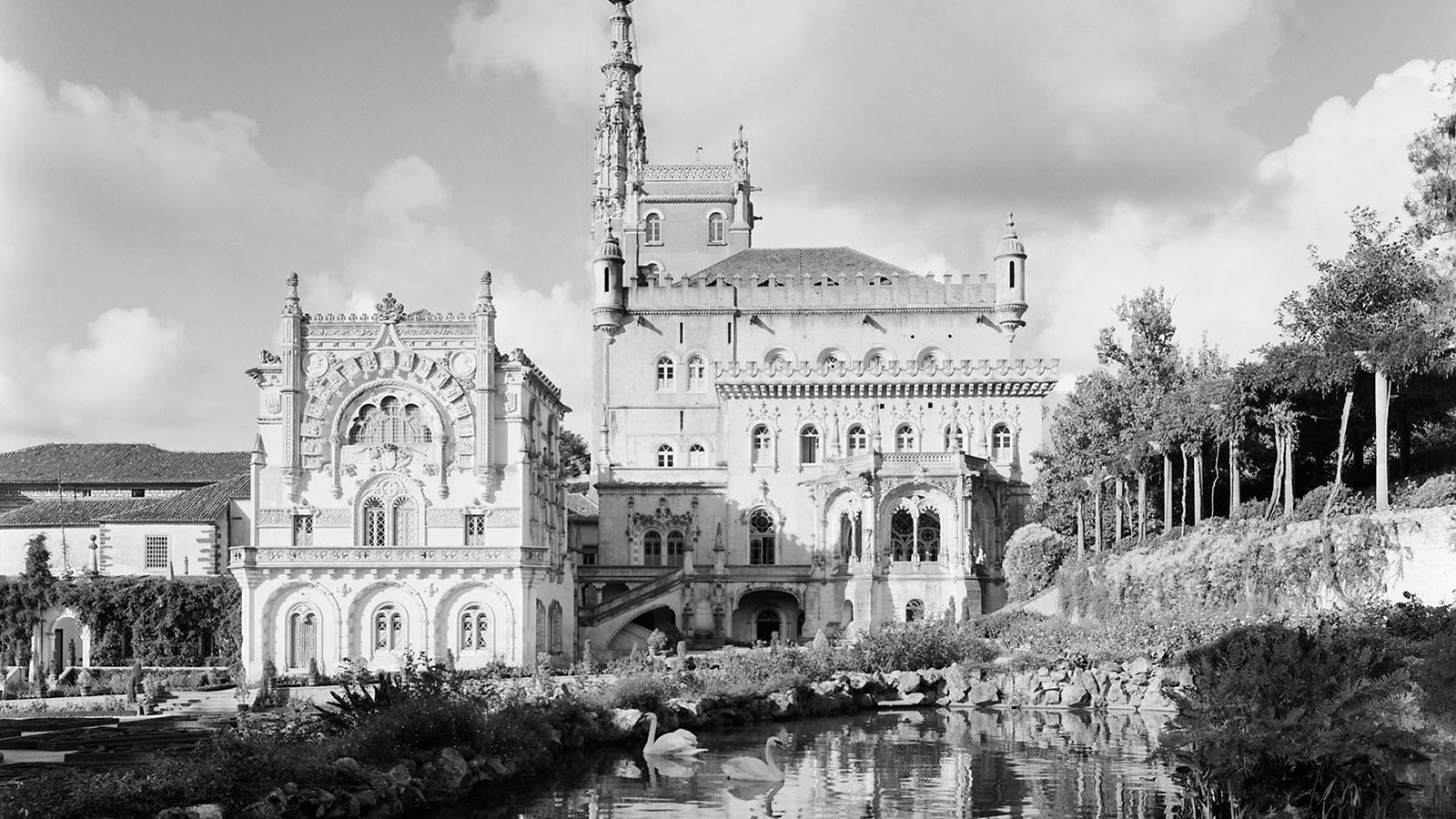Hotels
Hotel Astoria de Monfortinho
(Idanha-a-Nova, Portugal)
This 100-room hotel opened in 1948, designed by architect Vasco Lacerda Marques, was classified as “luxury” and served the Monfortinho thermal baths.
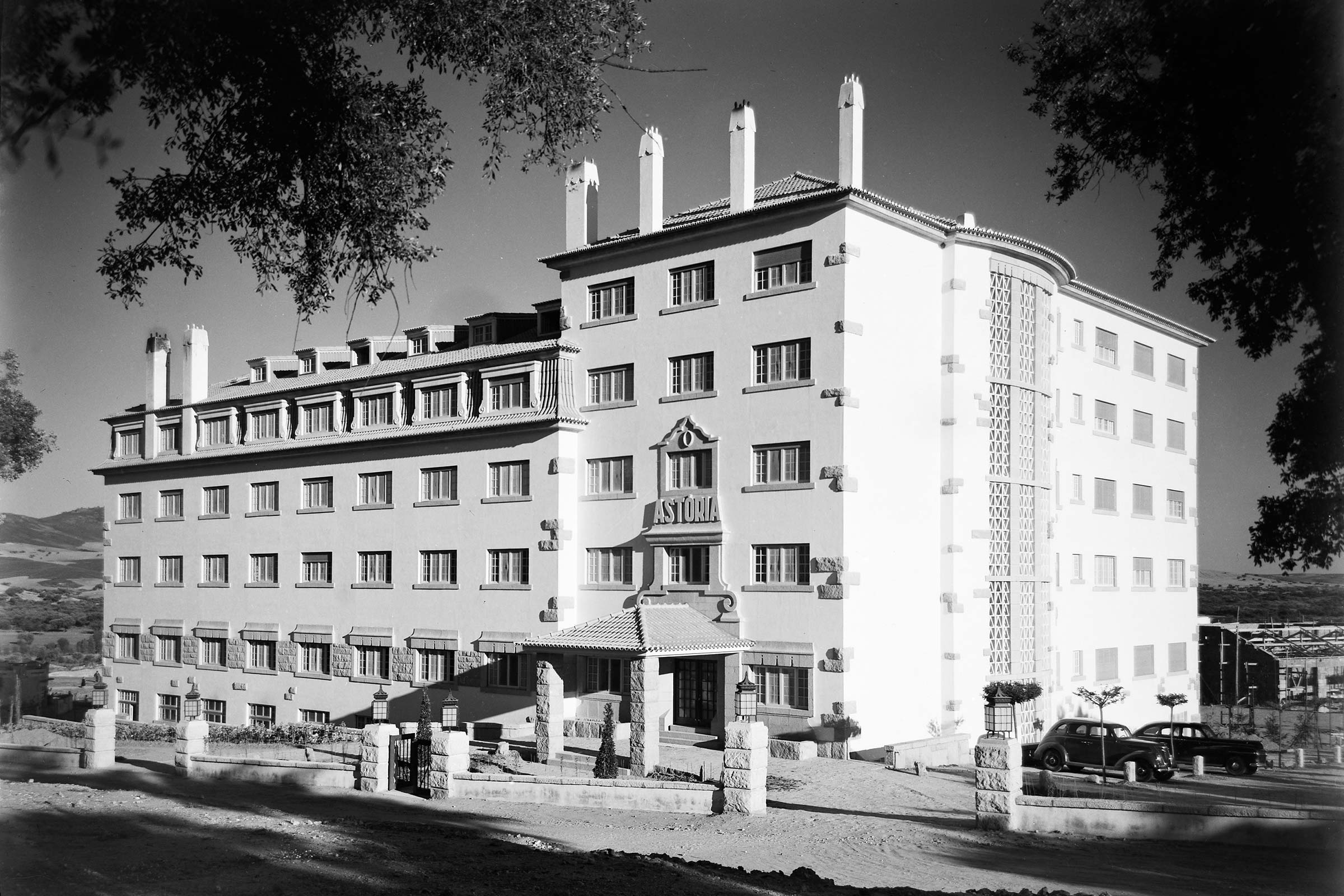
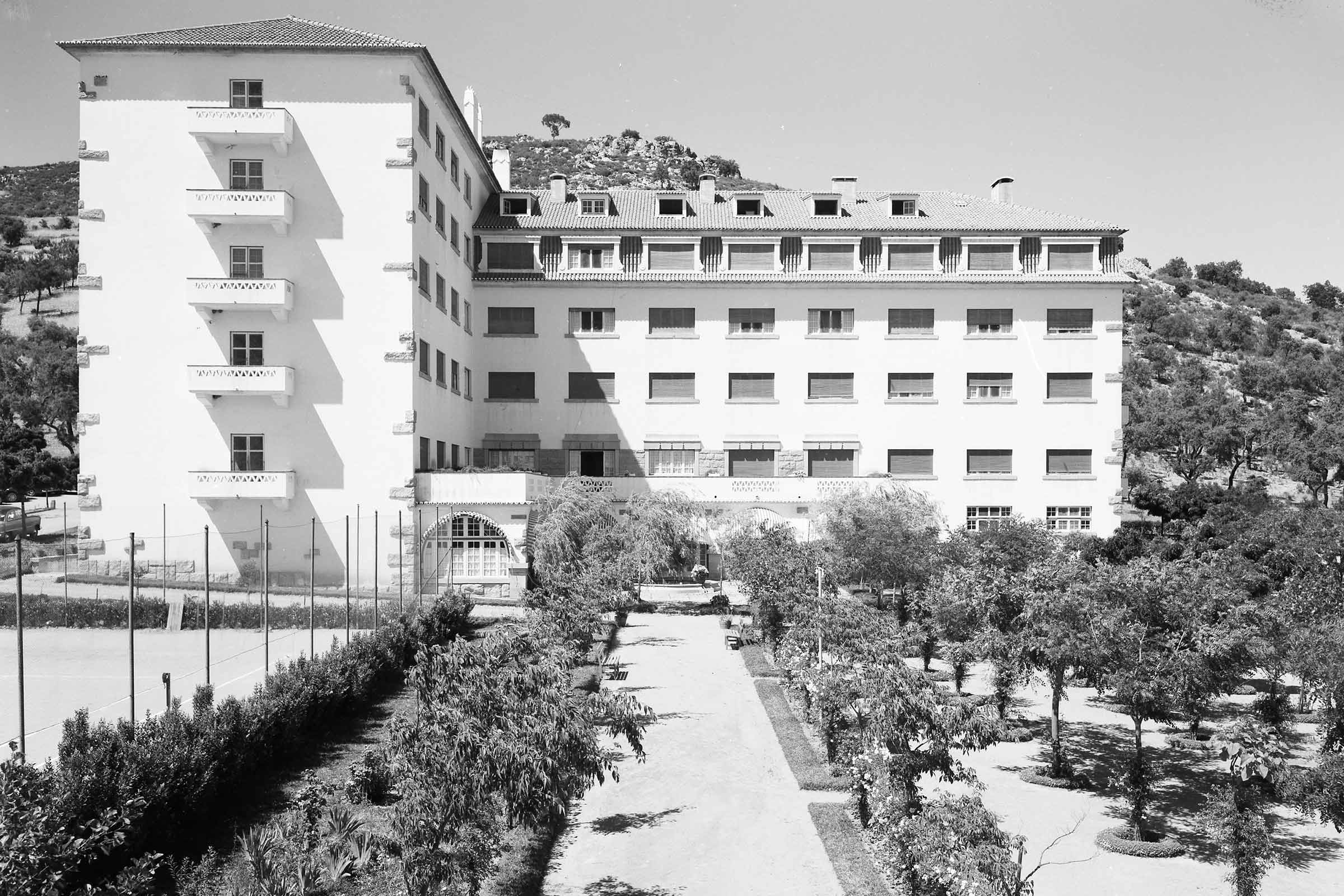


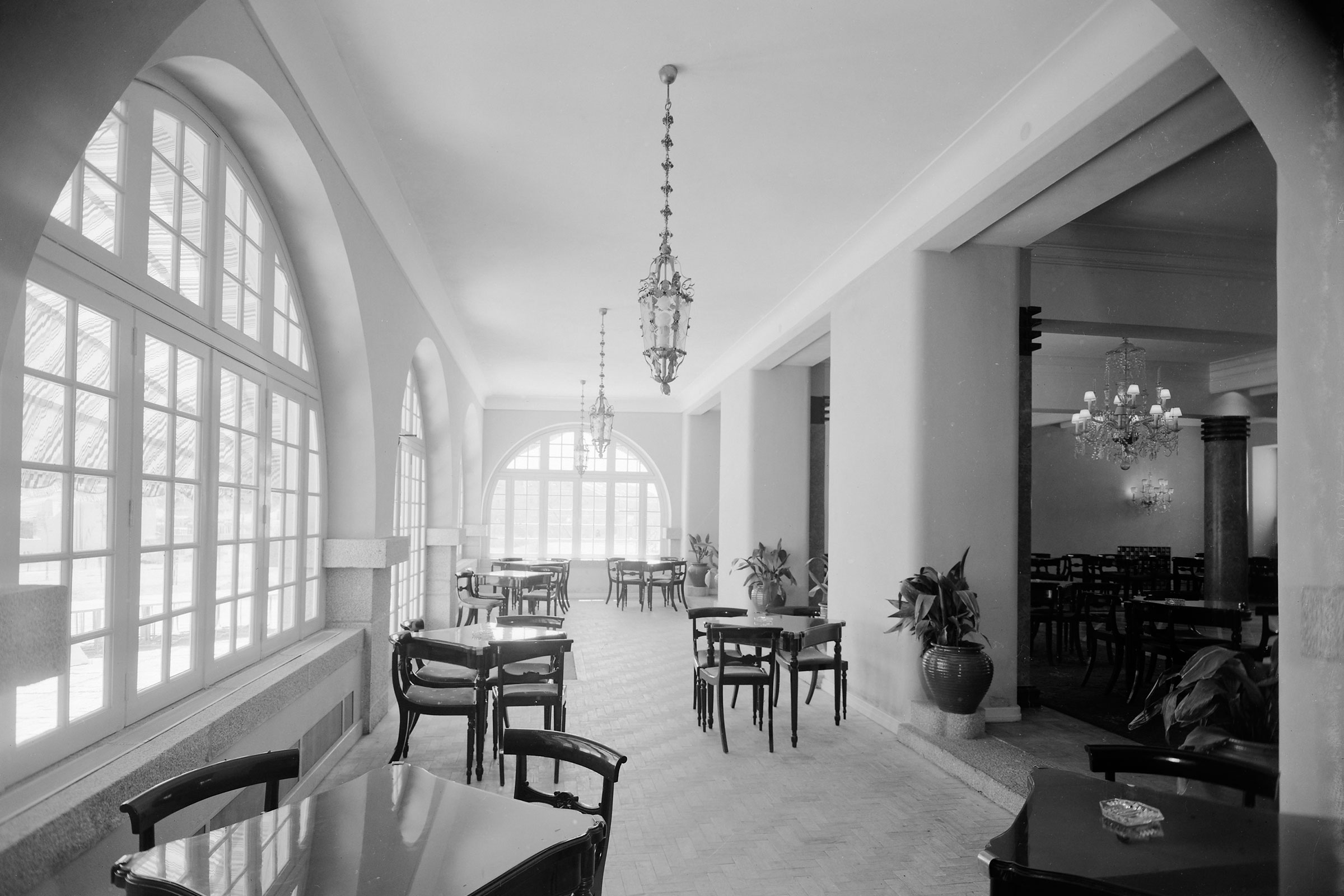
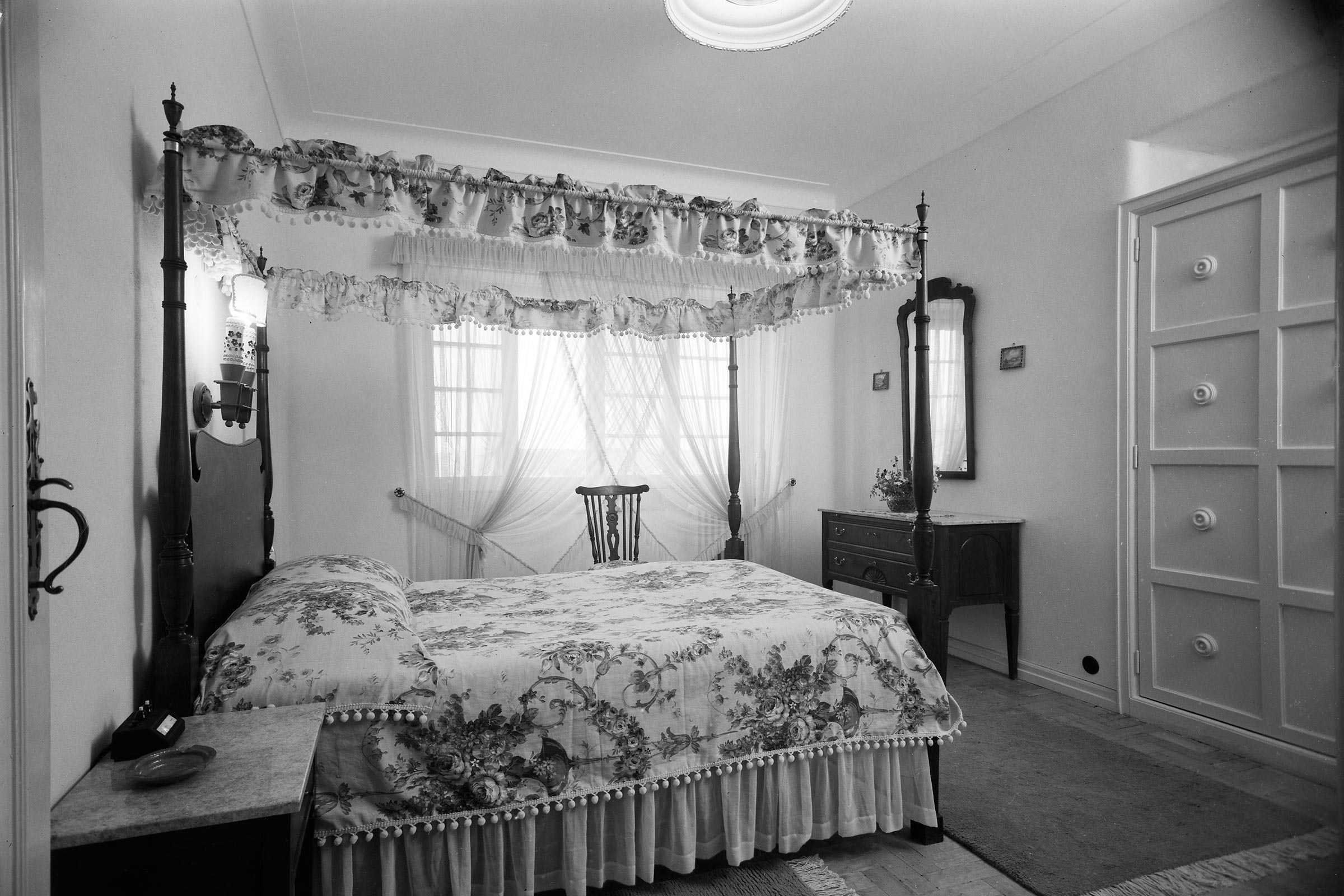
Hotel Aviz
(Lisbon, Portugal)
This beautiful building, designed by architect Miguel Ventura Terra for the family of the founder of the newspaper O século, José da Silva Graça, was located in the middle of Avenida Fontes Pereira de Melo.
It was transformed into the capital’s most luxurious hotel in 1933 and its facilities were remodelled by the architect Vasco Regaleira.
Demolished in 1962, it was in this hotel that Calouste Gulbenkian lived the last years of his life.



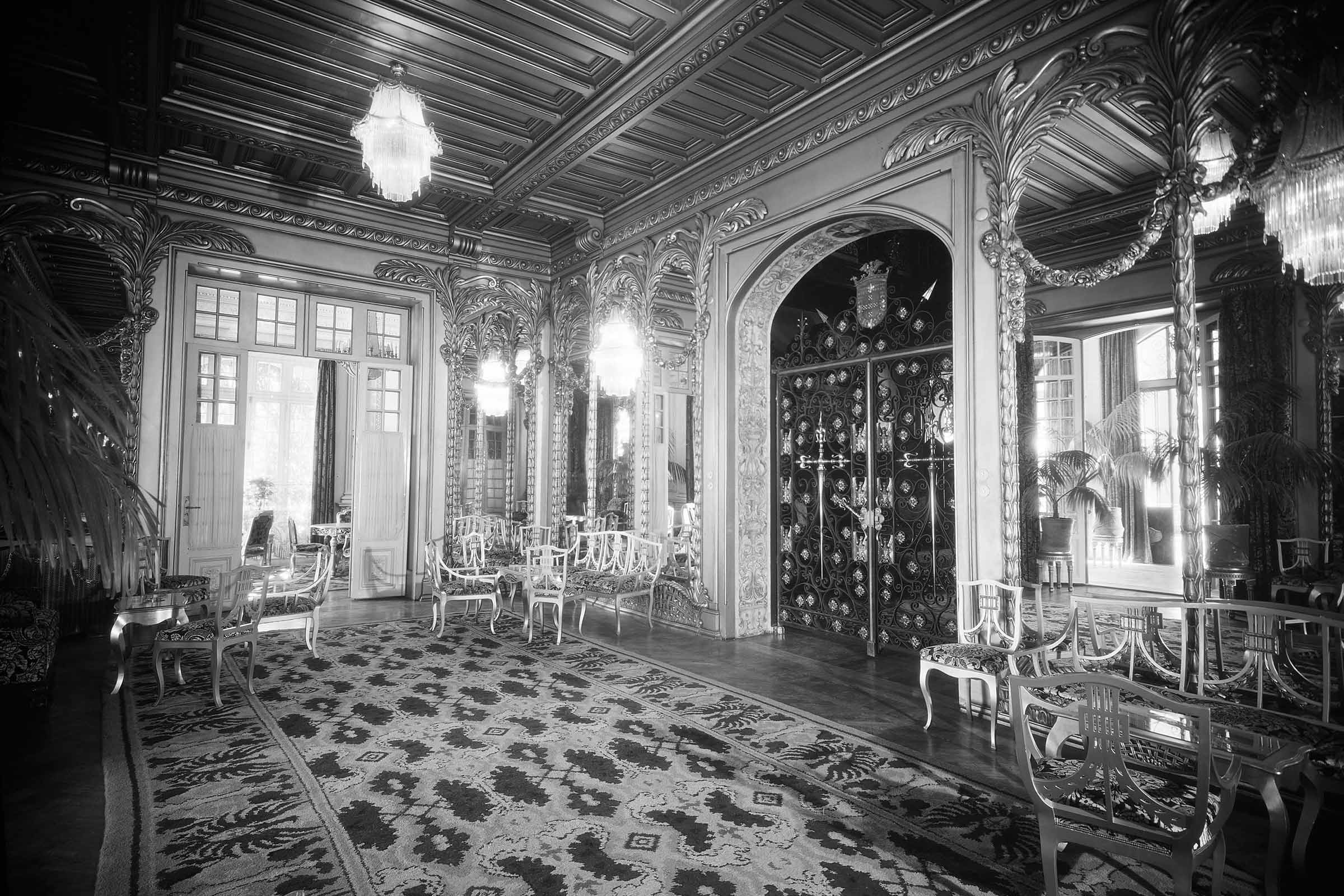
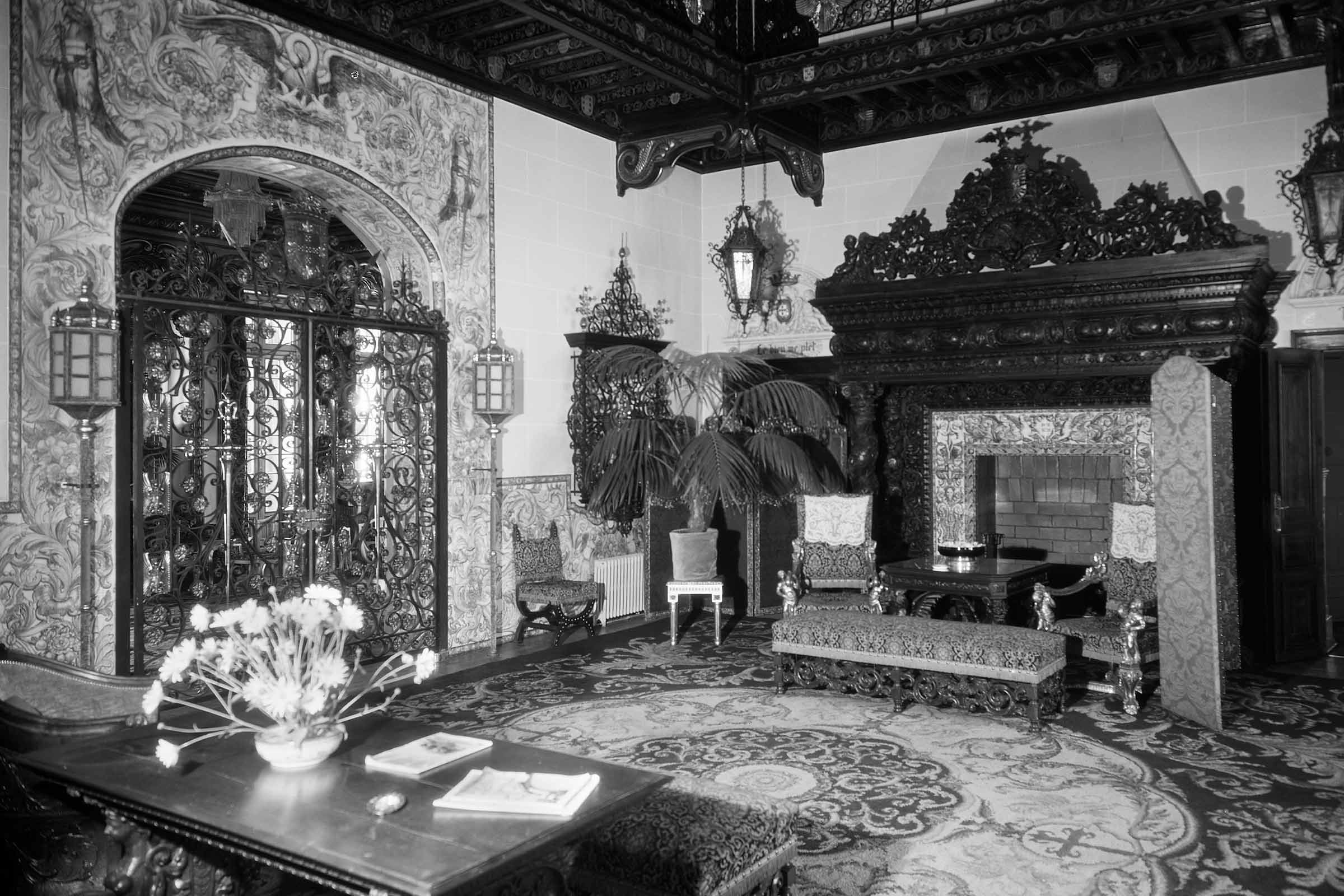
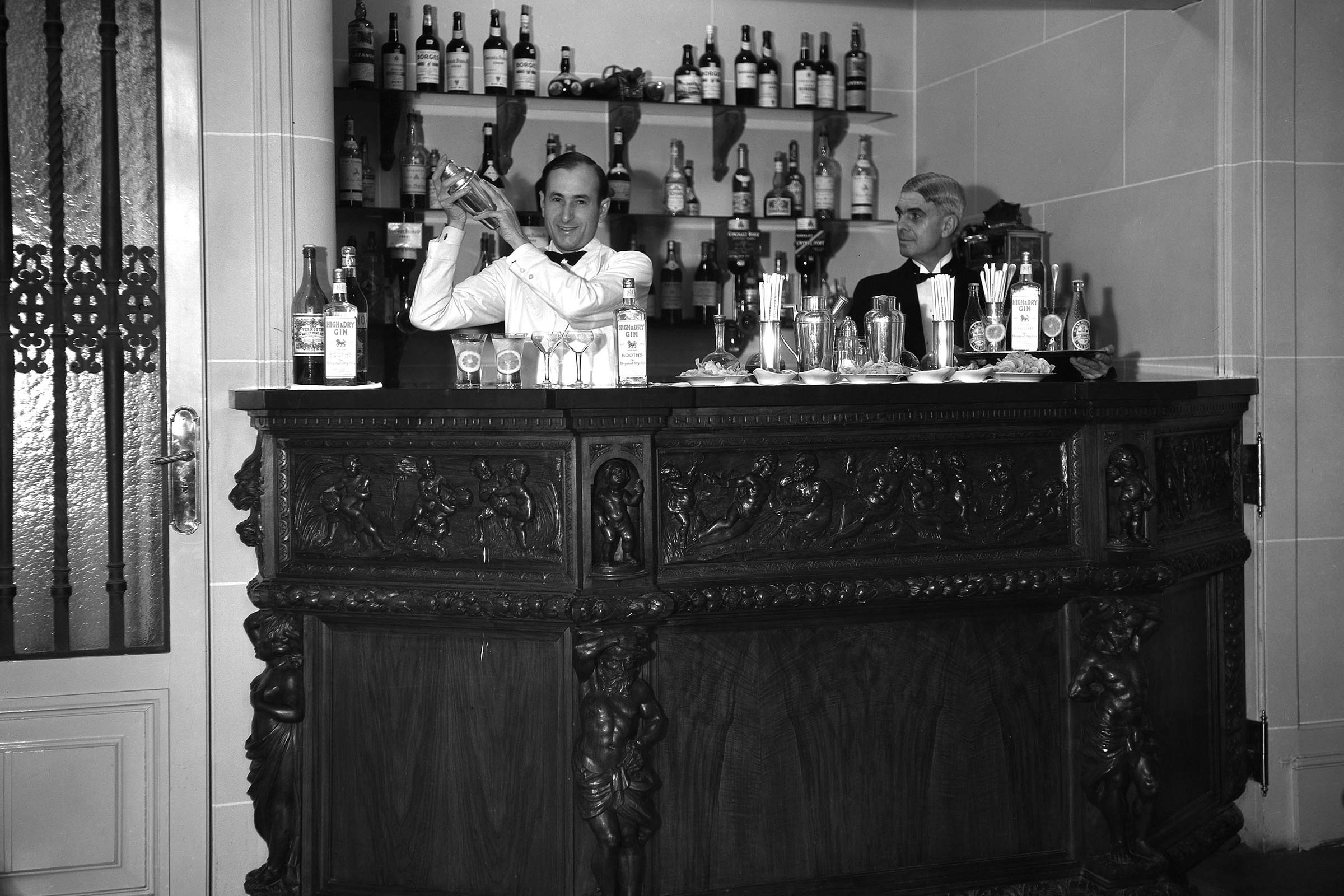
Hotel Cibra
(Estoril, Portugal)
This hotel opened in October 1957, in a building designed by the architect Filipe Nobre de Figueiredo.
It offered 50 rooms with bathrooms and balconies with a view, spread over six floors; there was a nightclub on the terrace and a snack bar on the ground floor.
It is currently the Hotel Vila Galé Estoril.
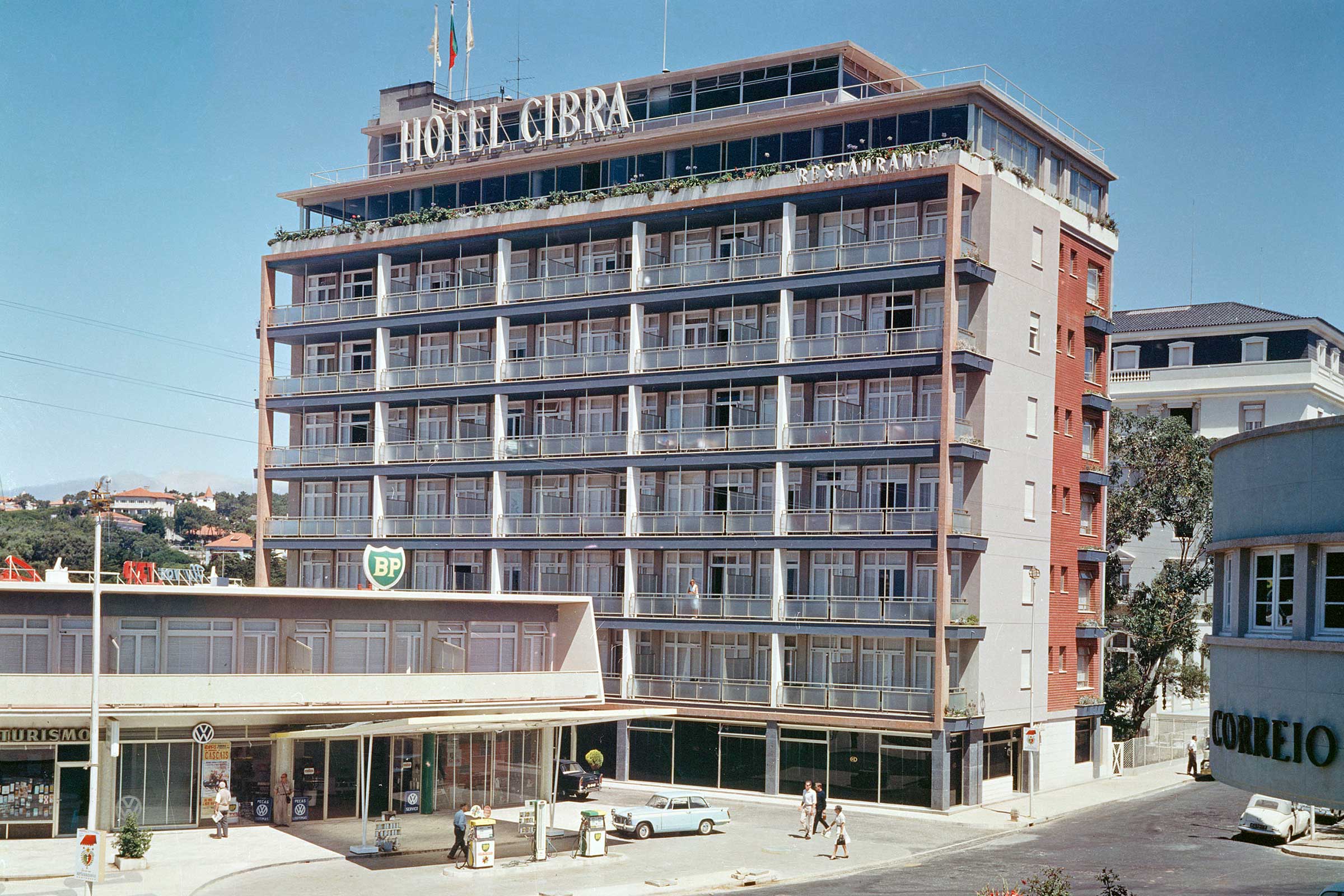

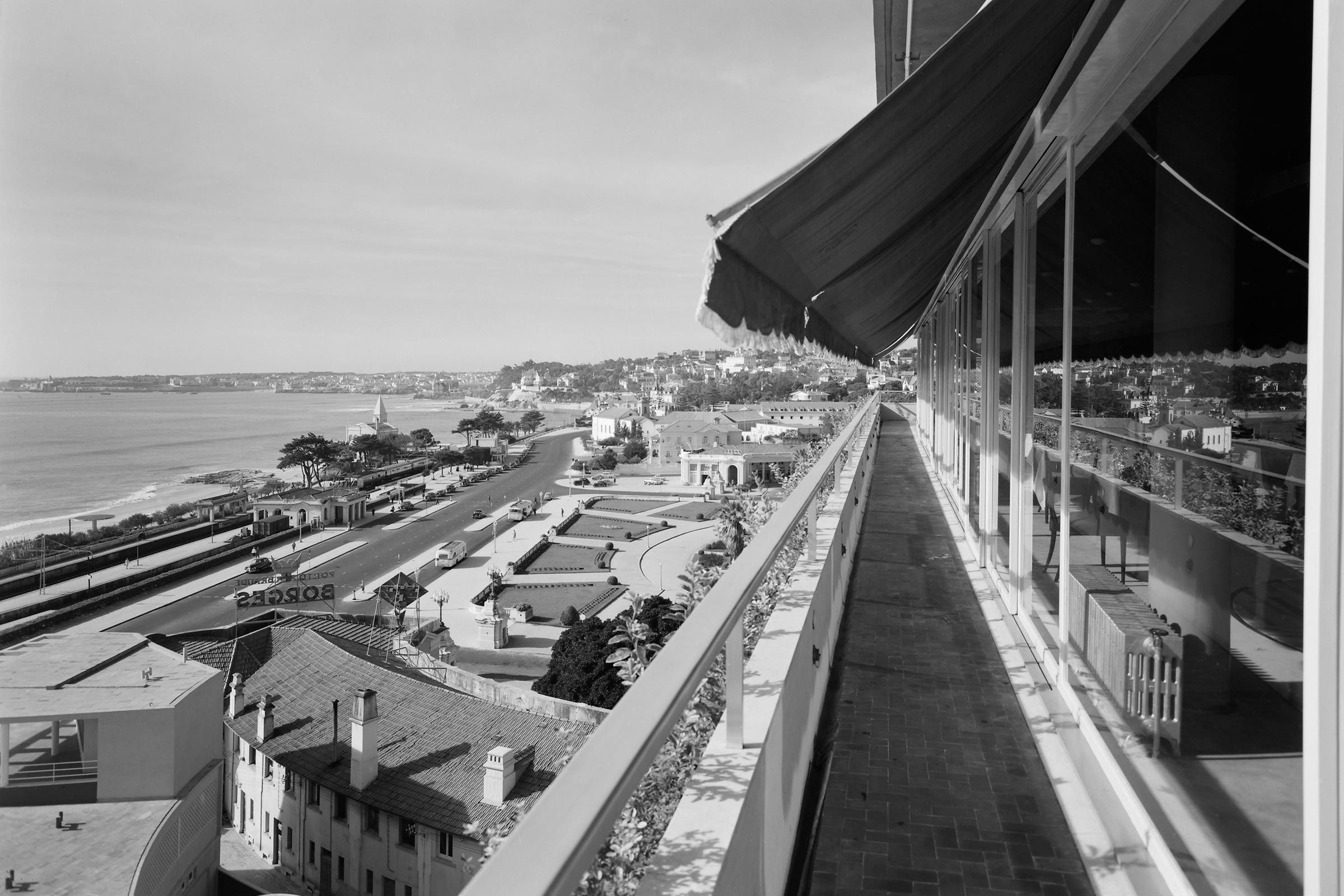
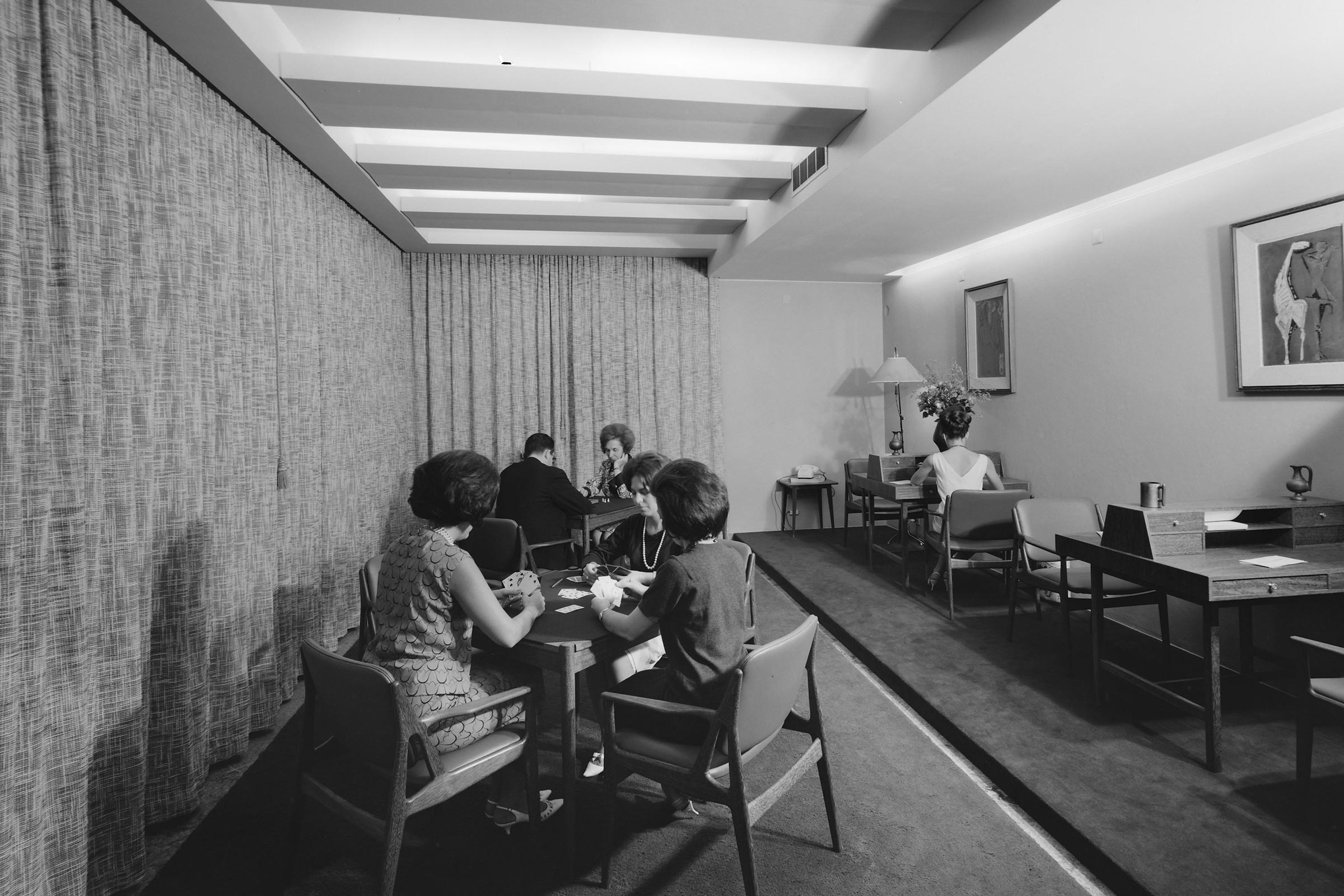
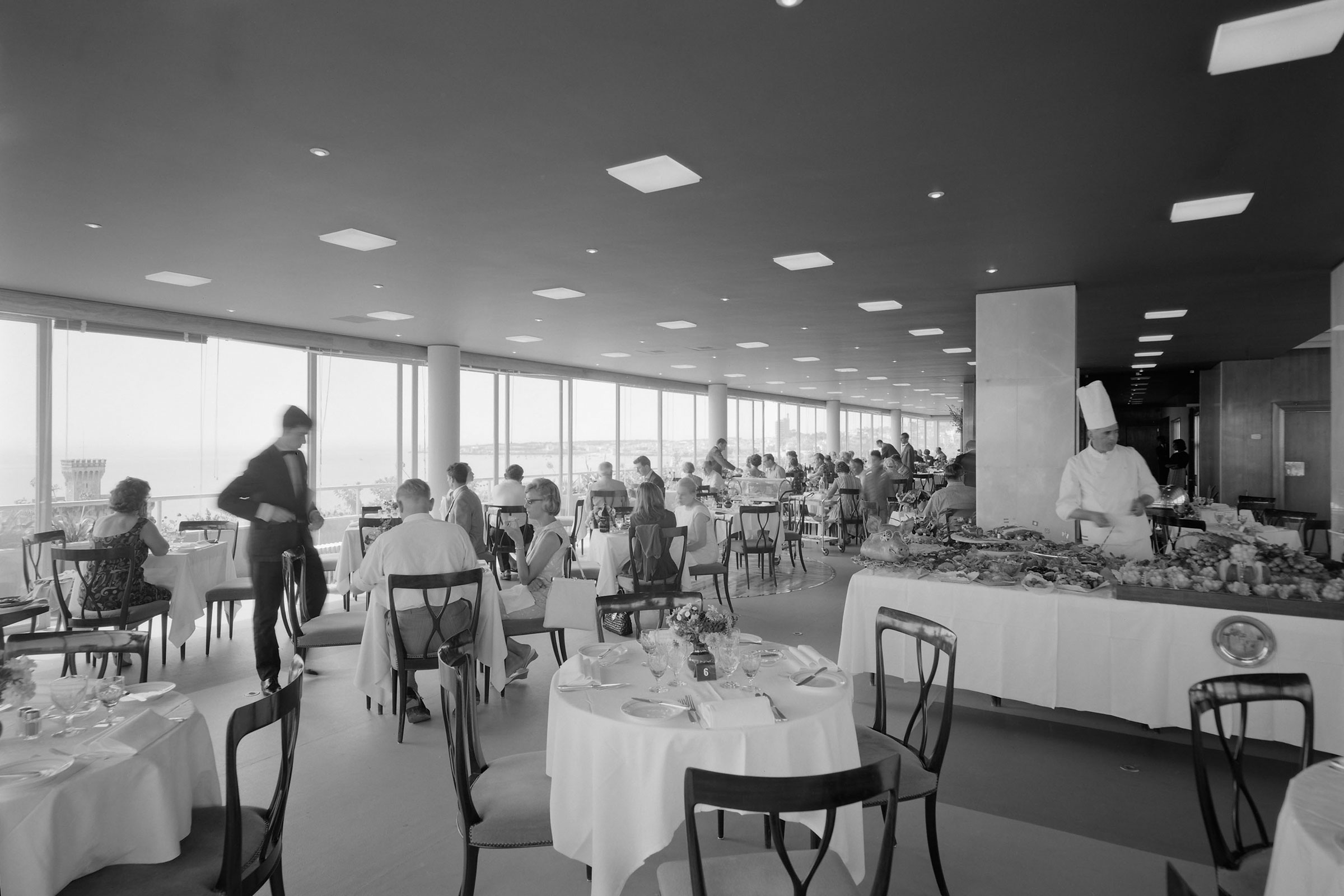

Hotel da Nazaré
(Portugal)
Initially opened in June 1960, with a project by architect João Simões, the Hotel da Nazaré – which in advertising at the time appeared as “the ocean viewpoint” – was extended in 1962 to offer 78 rooms and 4 flats in the 3-star category.
The rooms had a bathroom, telephone, and radio. On the top floor, a terrace allowed guests to admire the landscape.
It’s still operating.
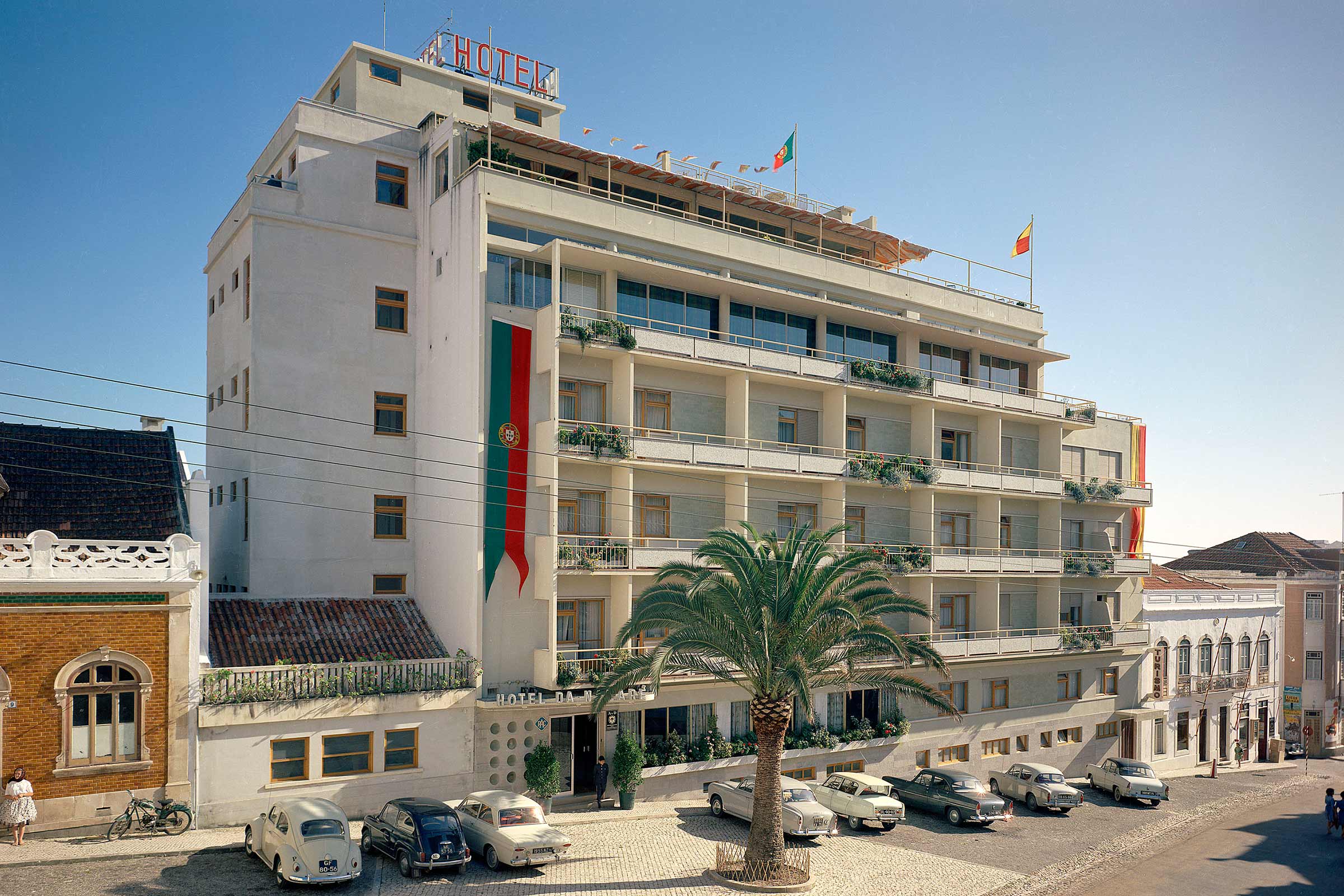

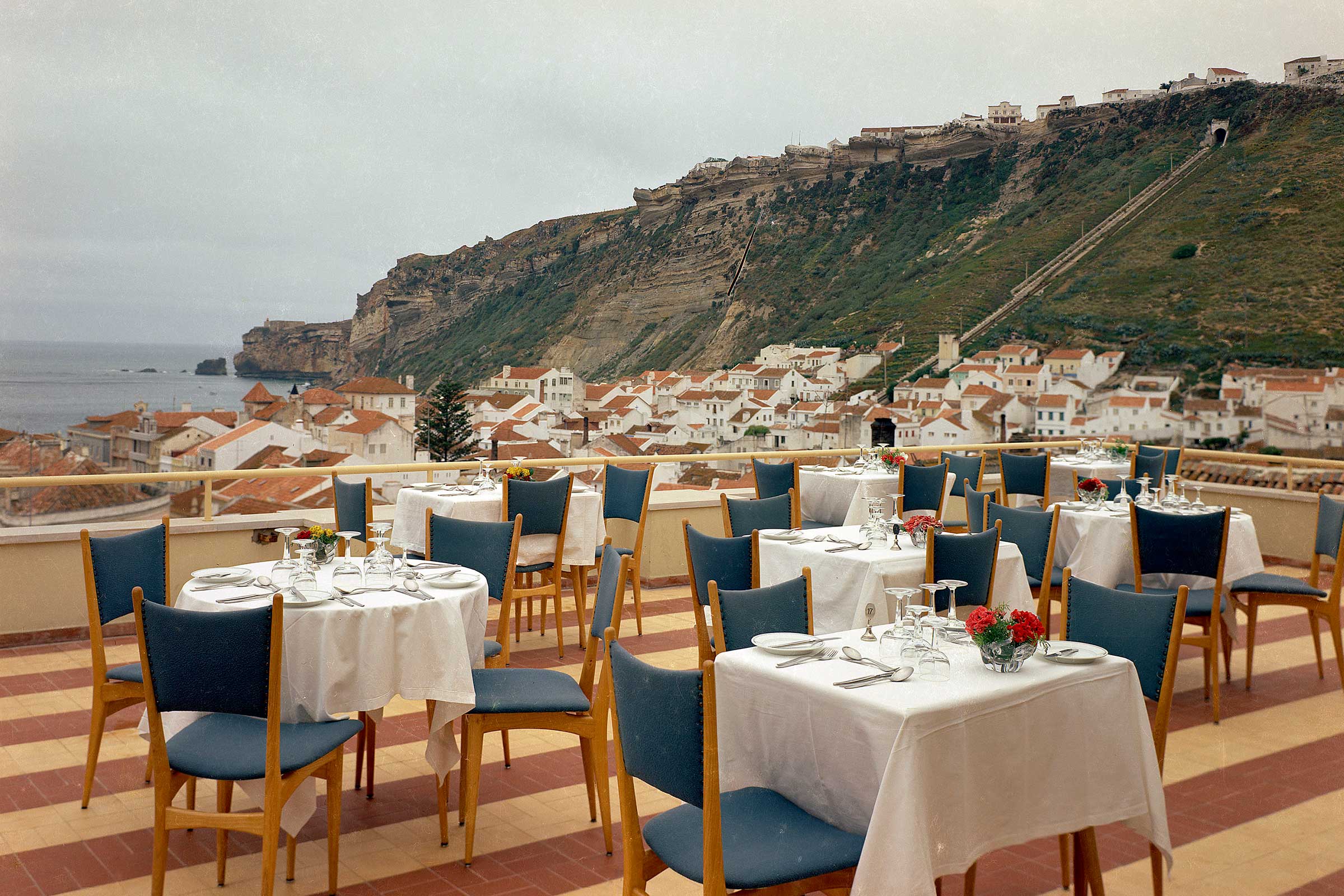
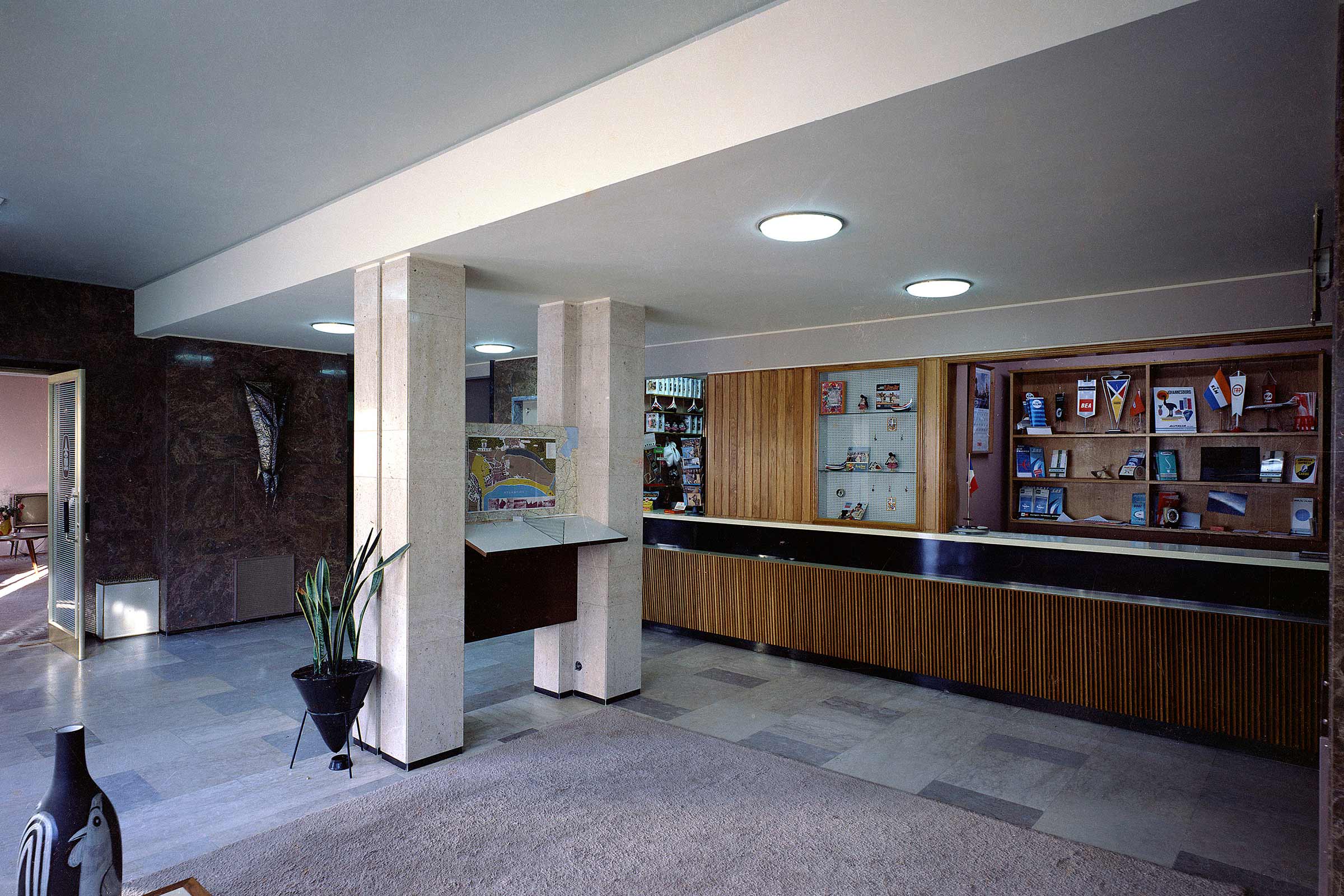

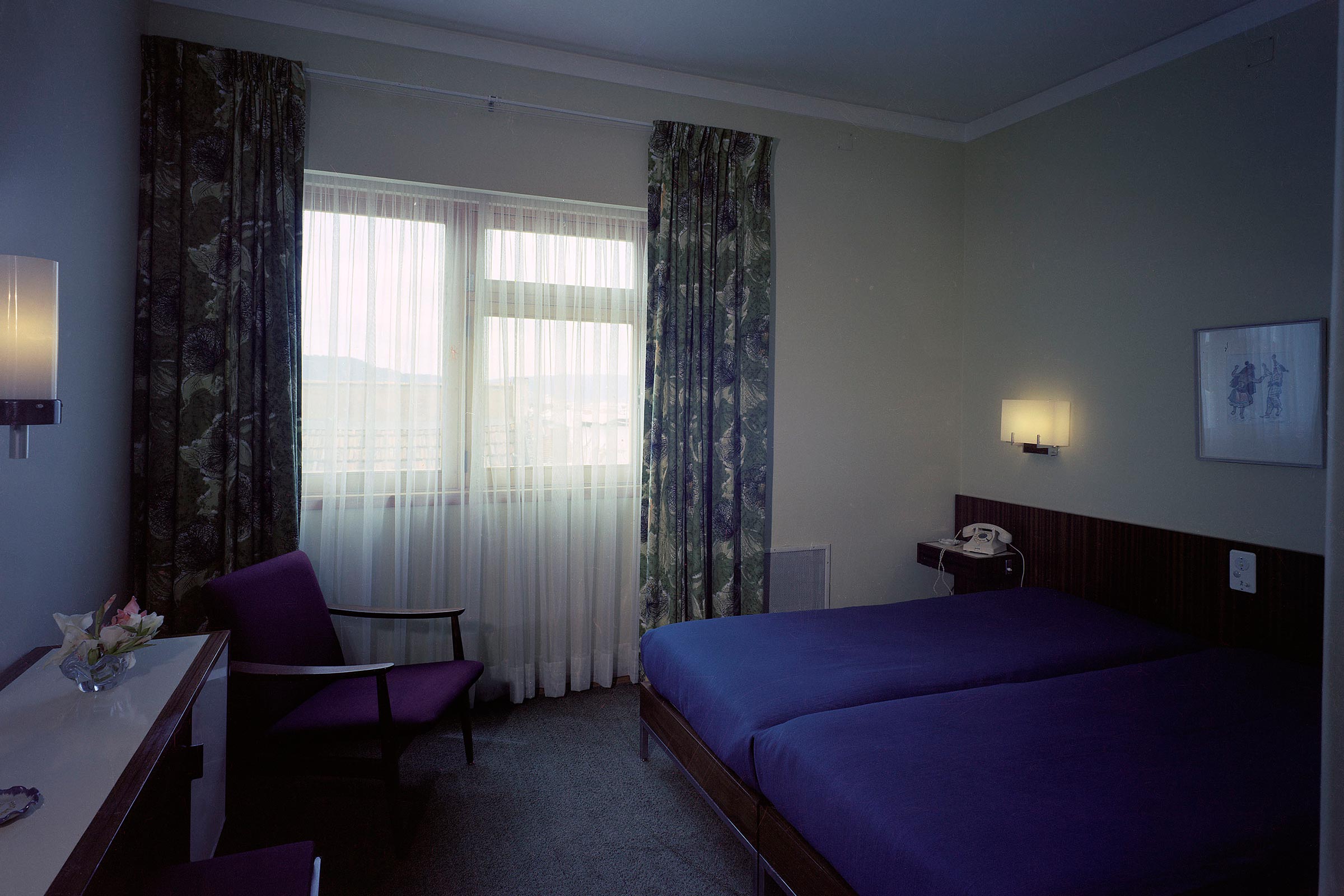
Hotel Estoril-Sol
(Cascais, Portugal)
Demolished in 2007, the Estoril-Sol was inaugurated with pomp and circumstance in January 1965.
Its construction – designed by the architect Raul Tojal – lasted around four and a half years and at the time it was the largest and most modern hotel in Portugal, with 350 rooms spread over 21 floors, a garage for 200 cars, a hairdresser, a gym, a bowling alley, a panoramic restaurant, and an outdoor Olympic-sized swimming pool.
Manuel Lapa (stained glass), Maria Keil (tapestry), Cecília de Sousa (ceramics) and Oskar Pinto Lobo (painting) collaborated in the decoration of the interiors, which were designed by José Espinho.
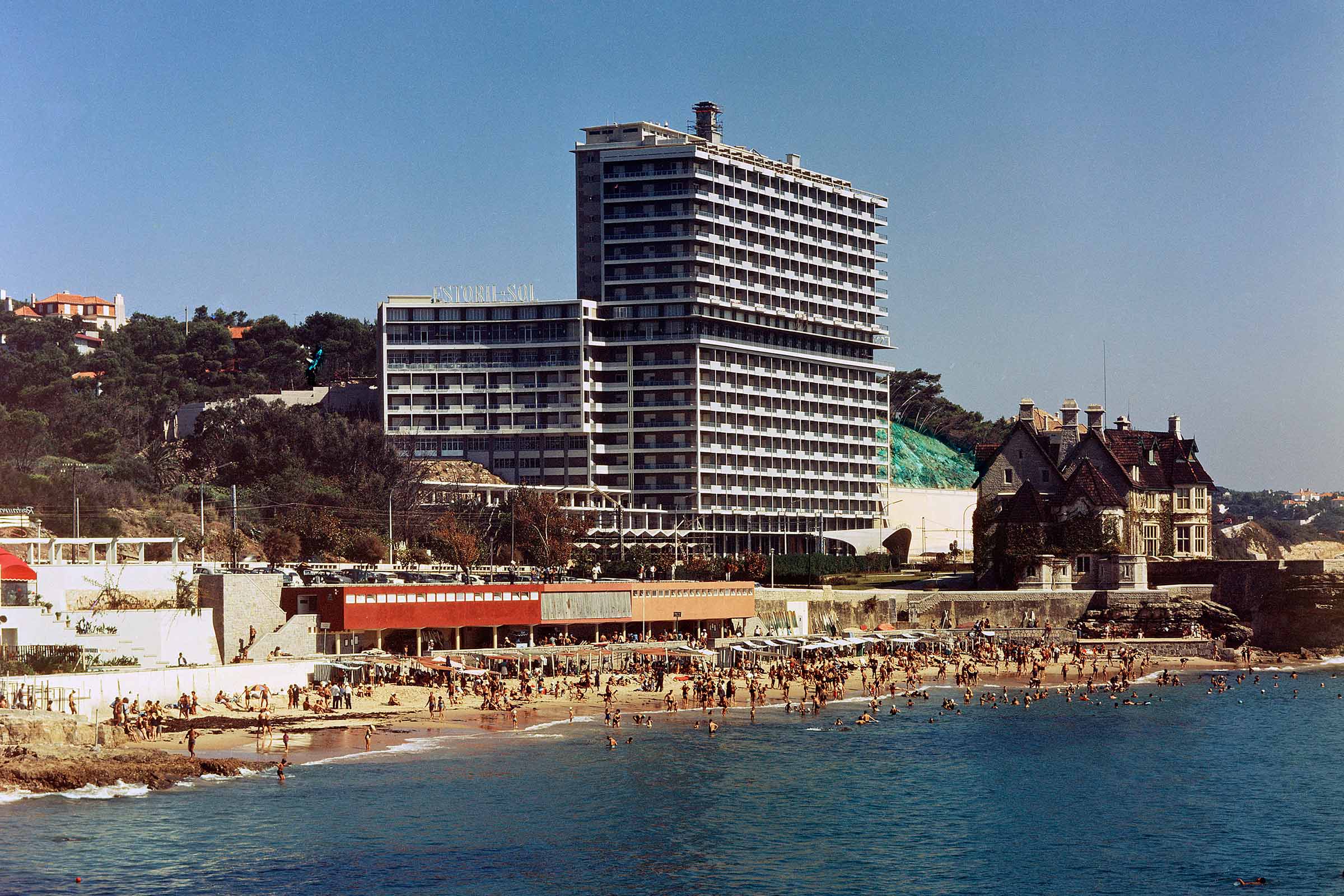
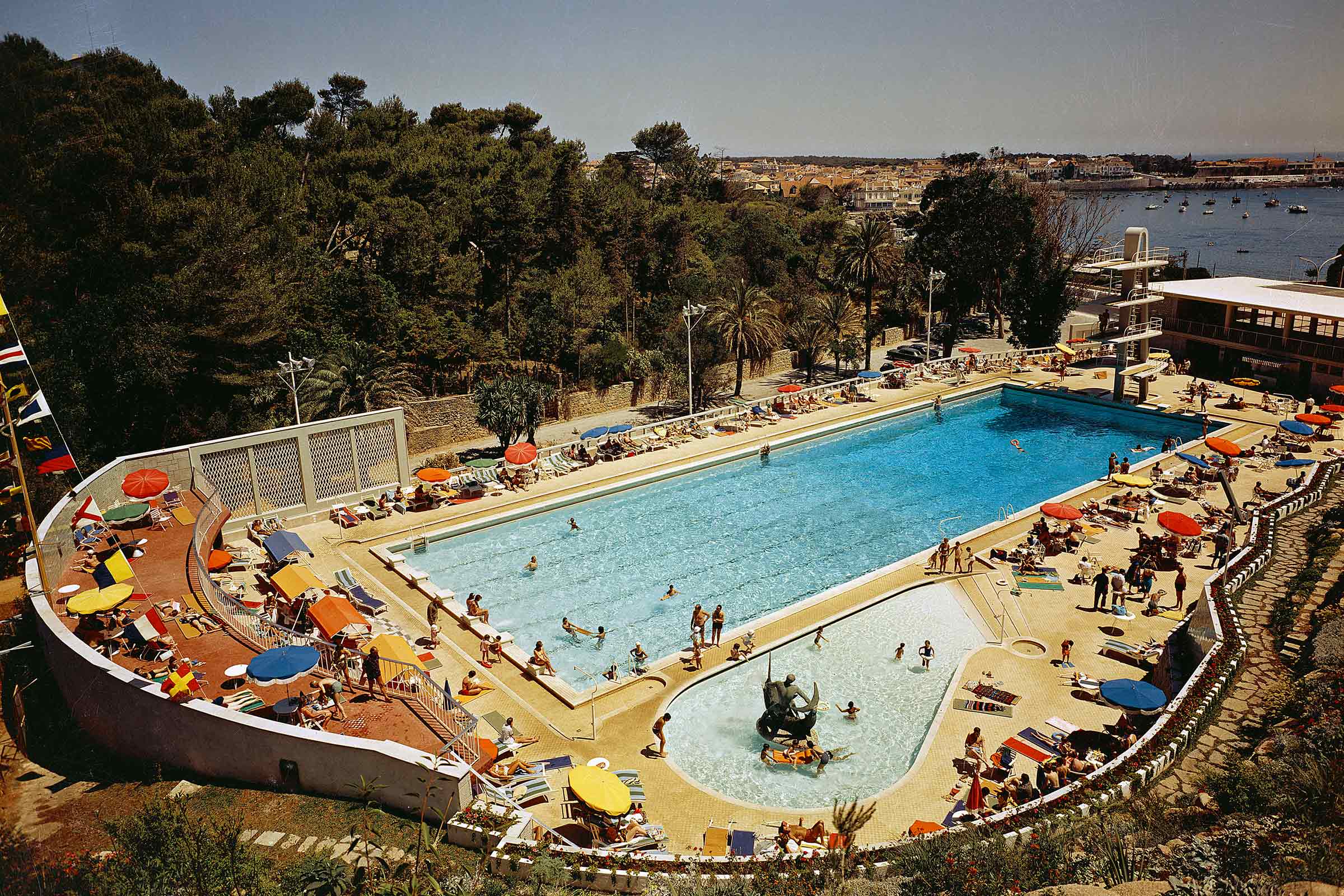
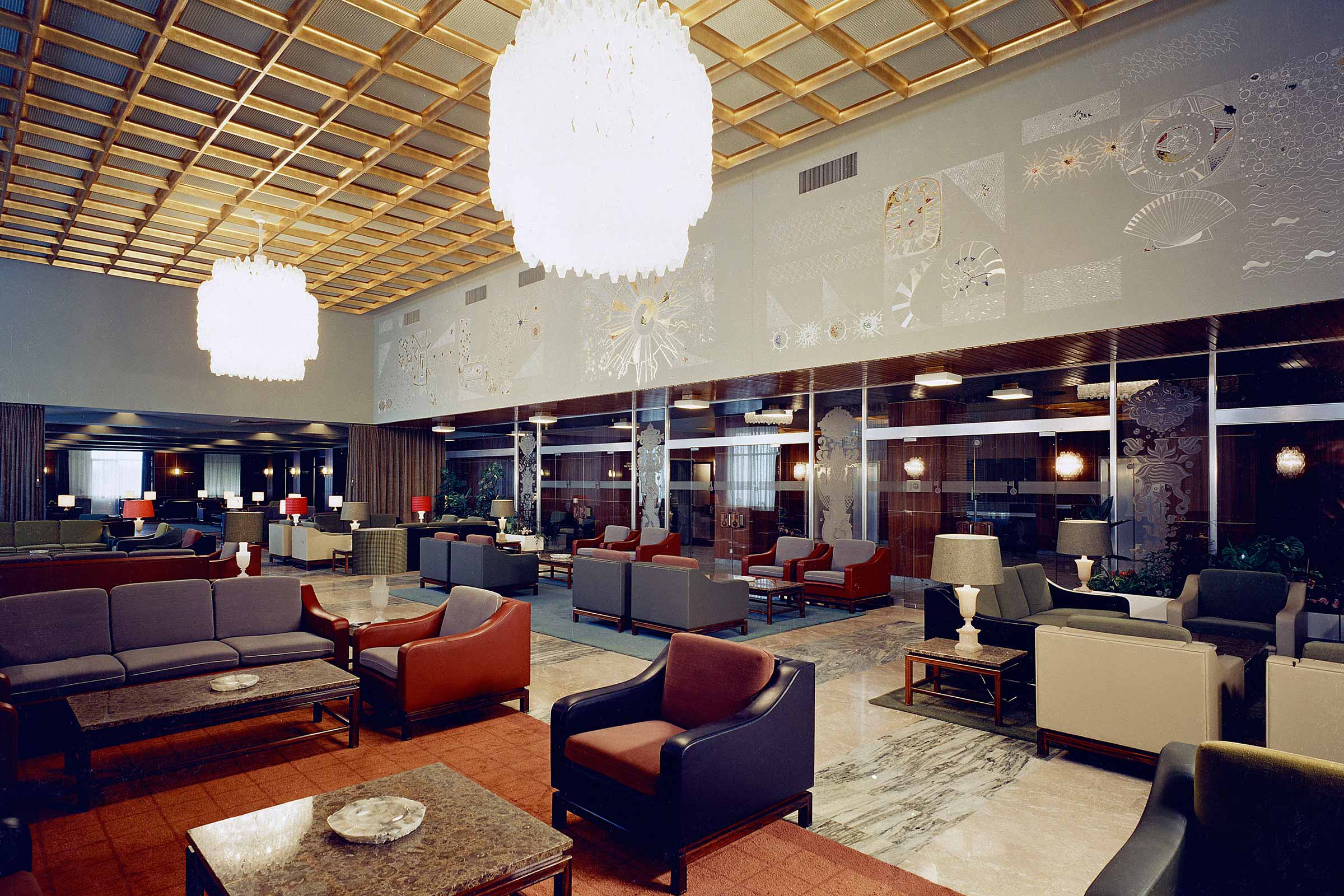
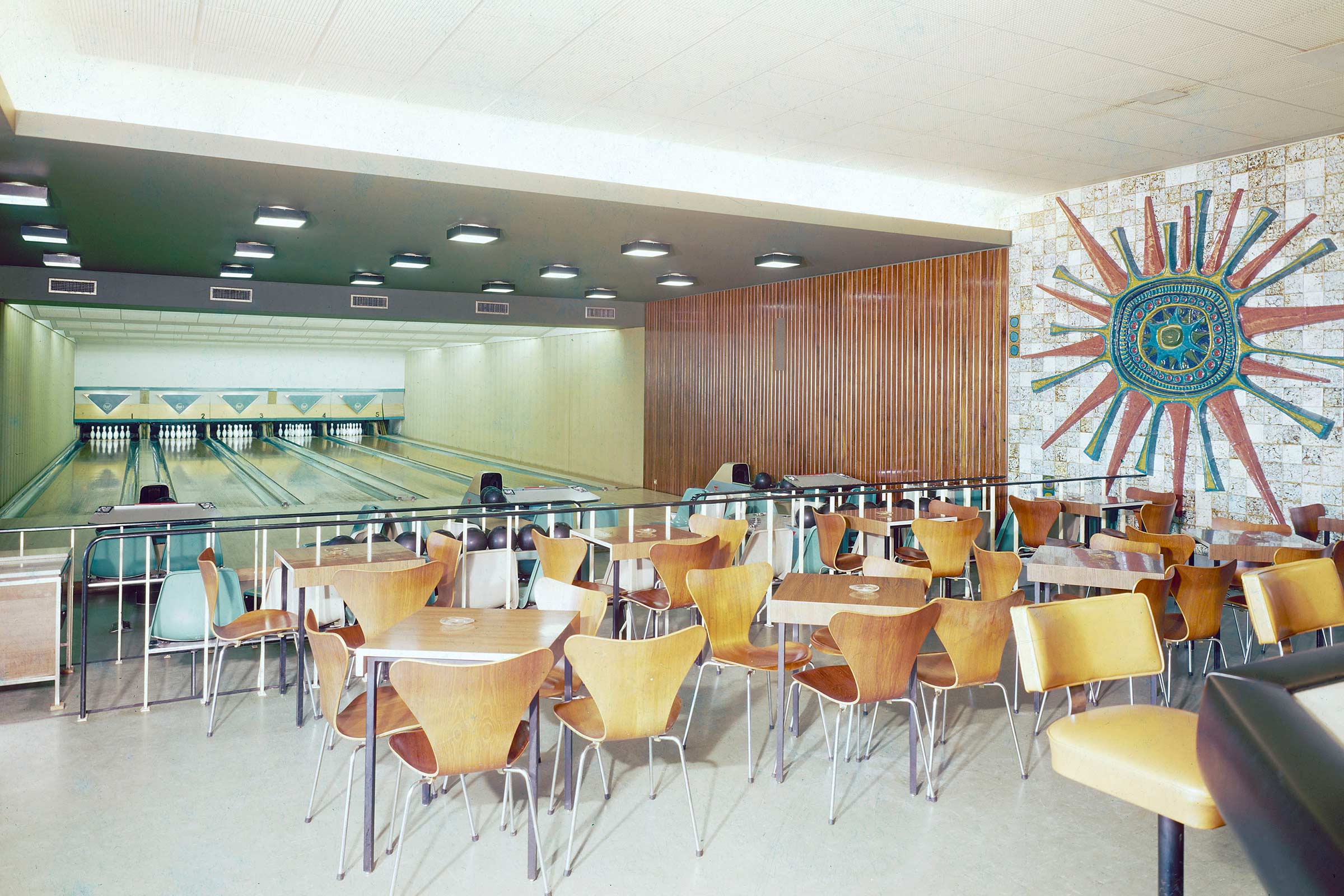
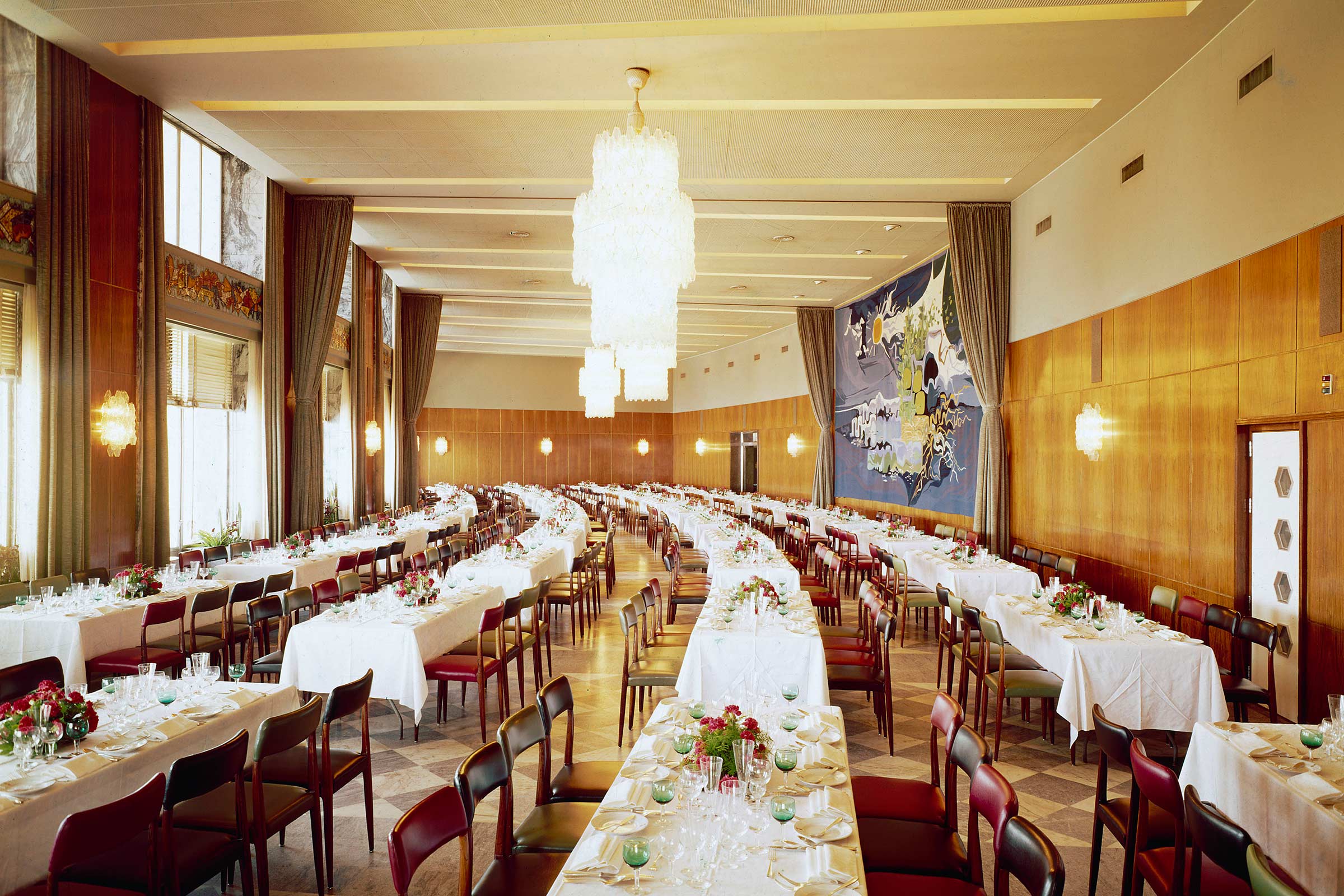
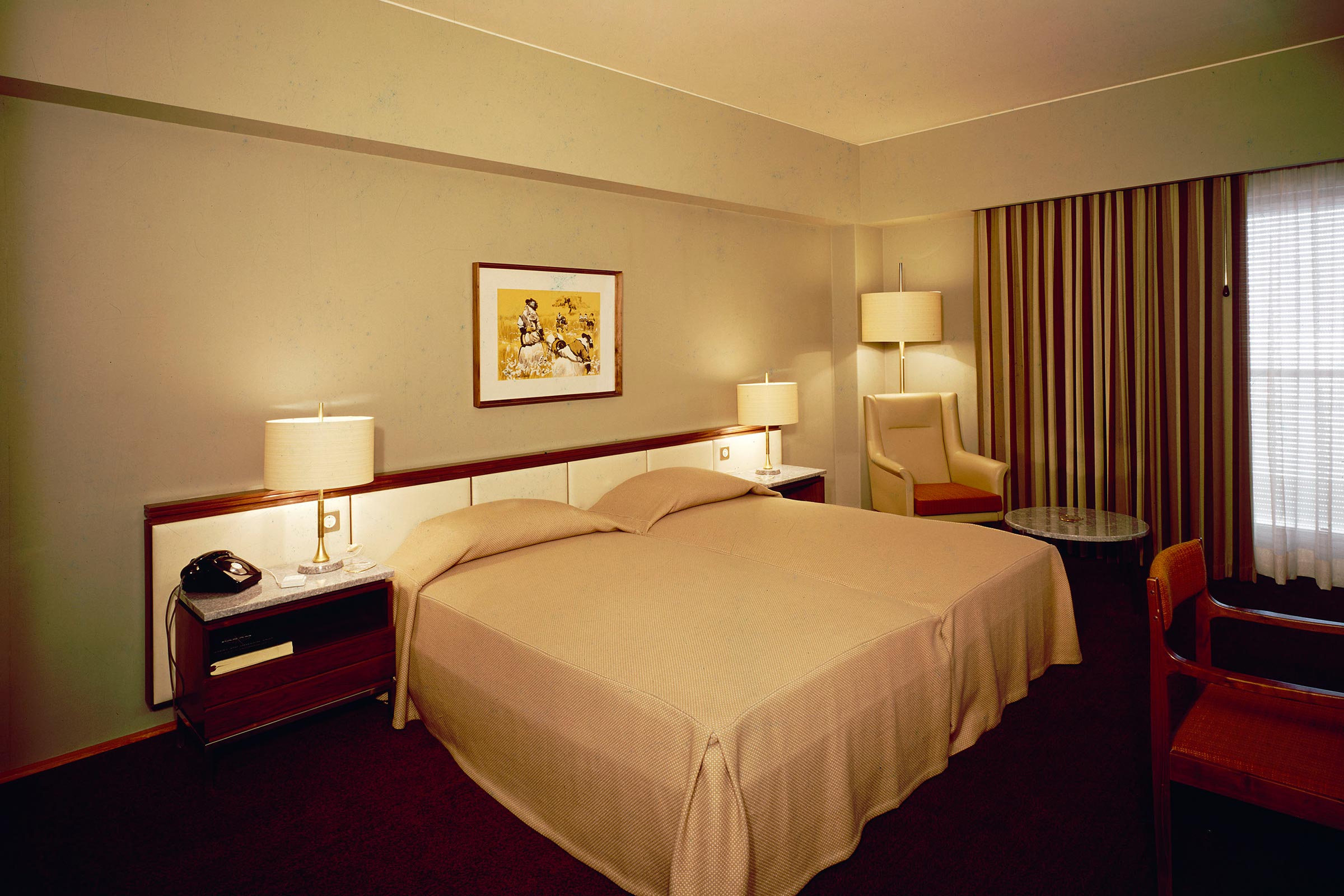
Hotel Rex
(Lisbon, Portugal)
This hotel opened its doors in 1960 in Castilho Street. With six floors, it offered 40 rooms with private bathrooms and six suites.
The bar and one of the restaurants were on the top floor, overlooking the city. At the entrance, guests were greeted by two “Varinas de Lisboa”, the work of sculptor Lagoa Henriques.
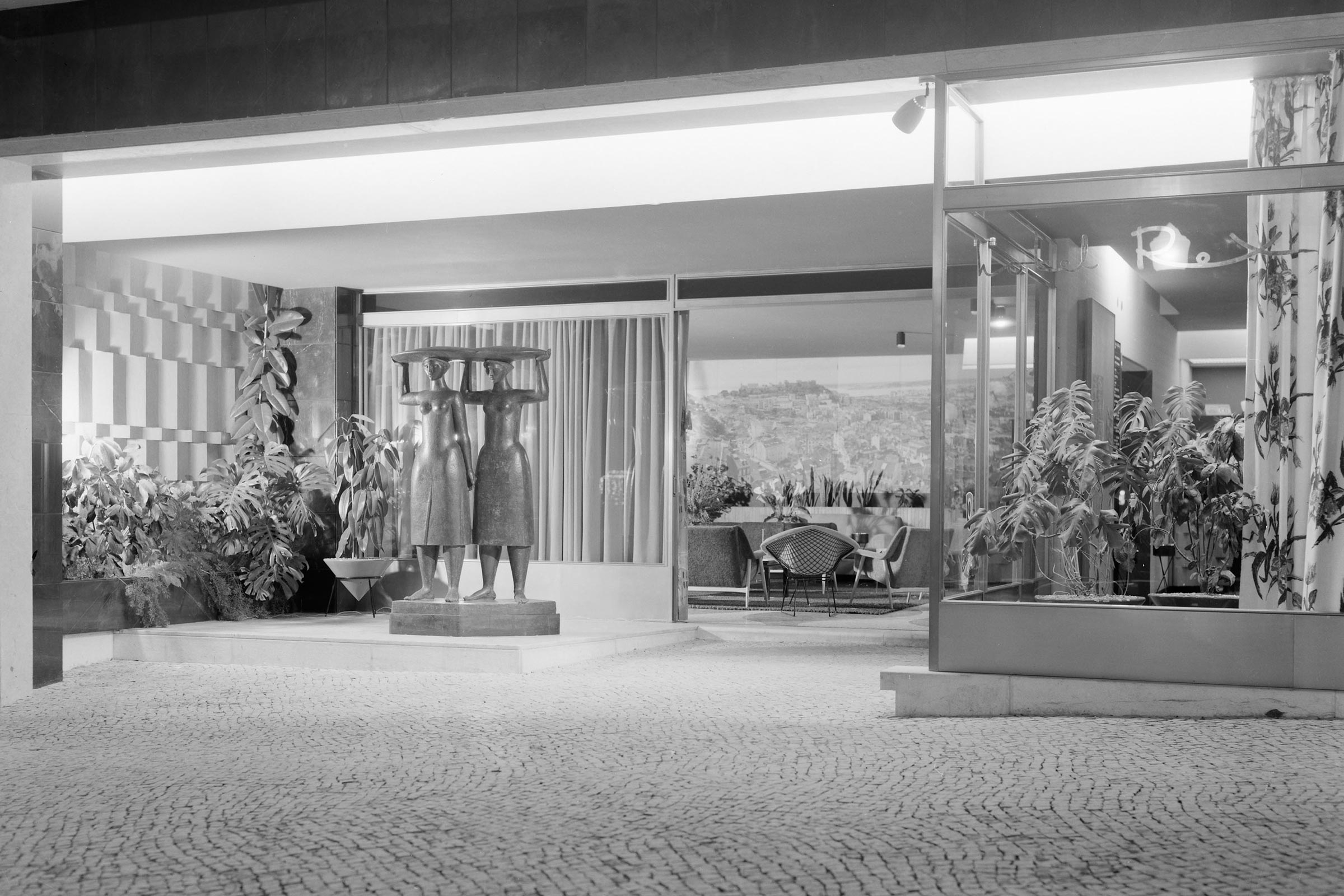
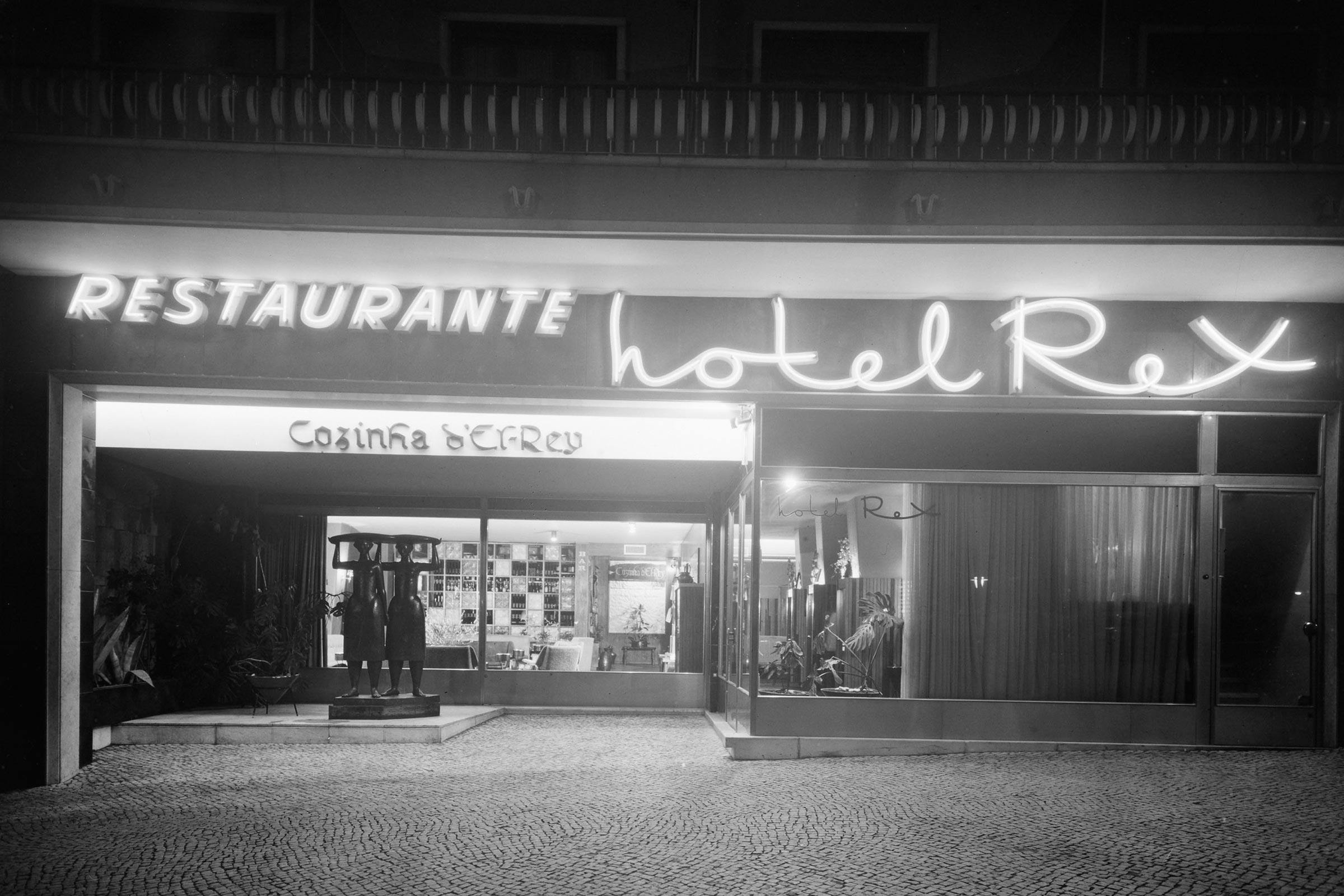
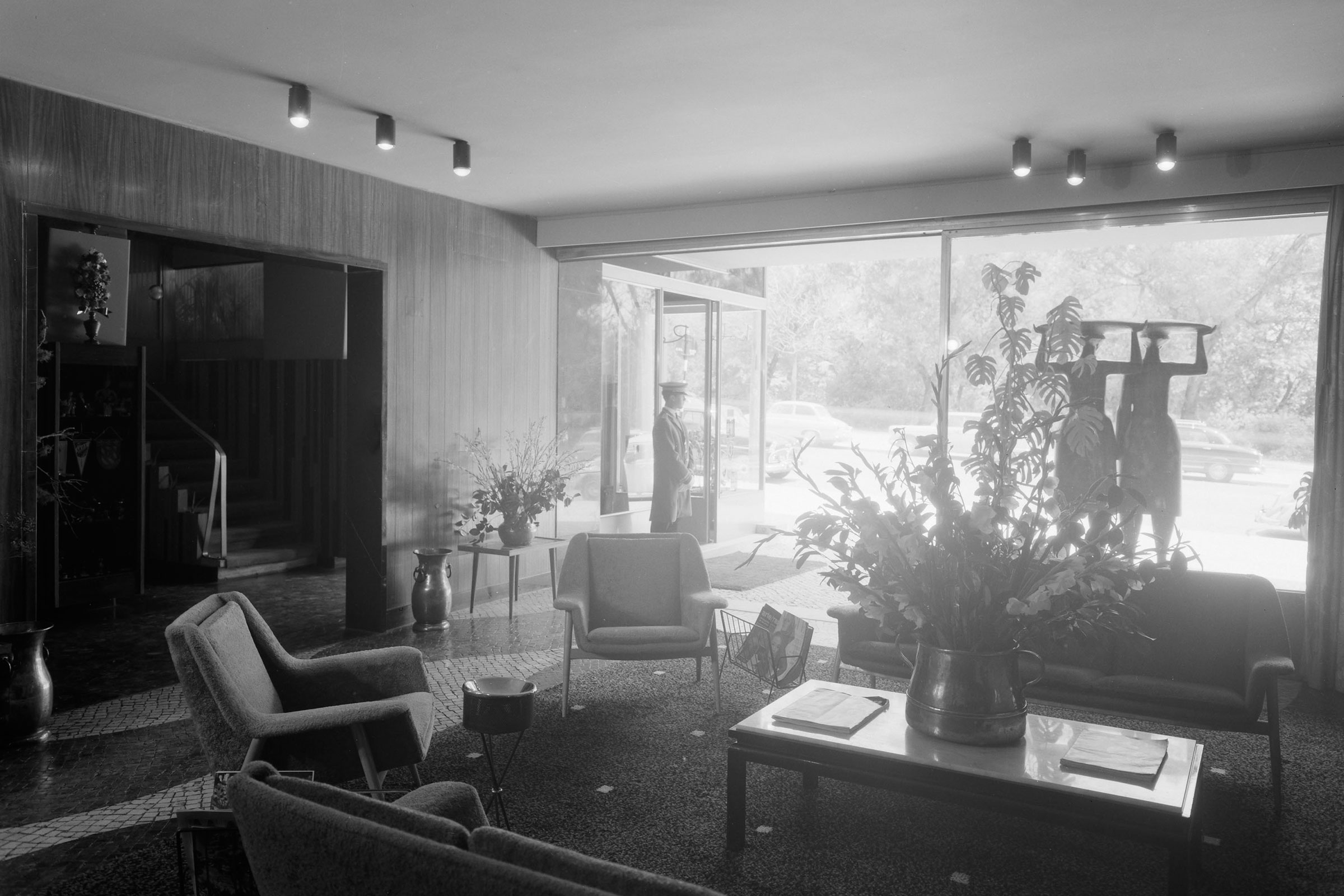
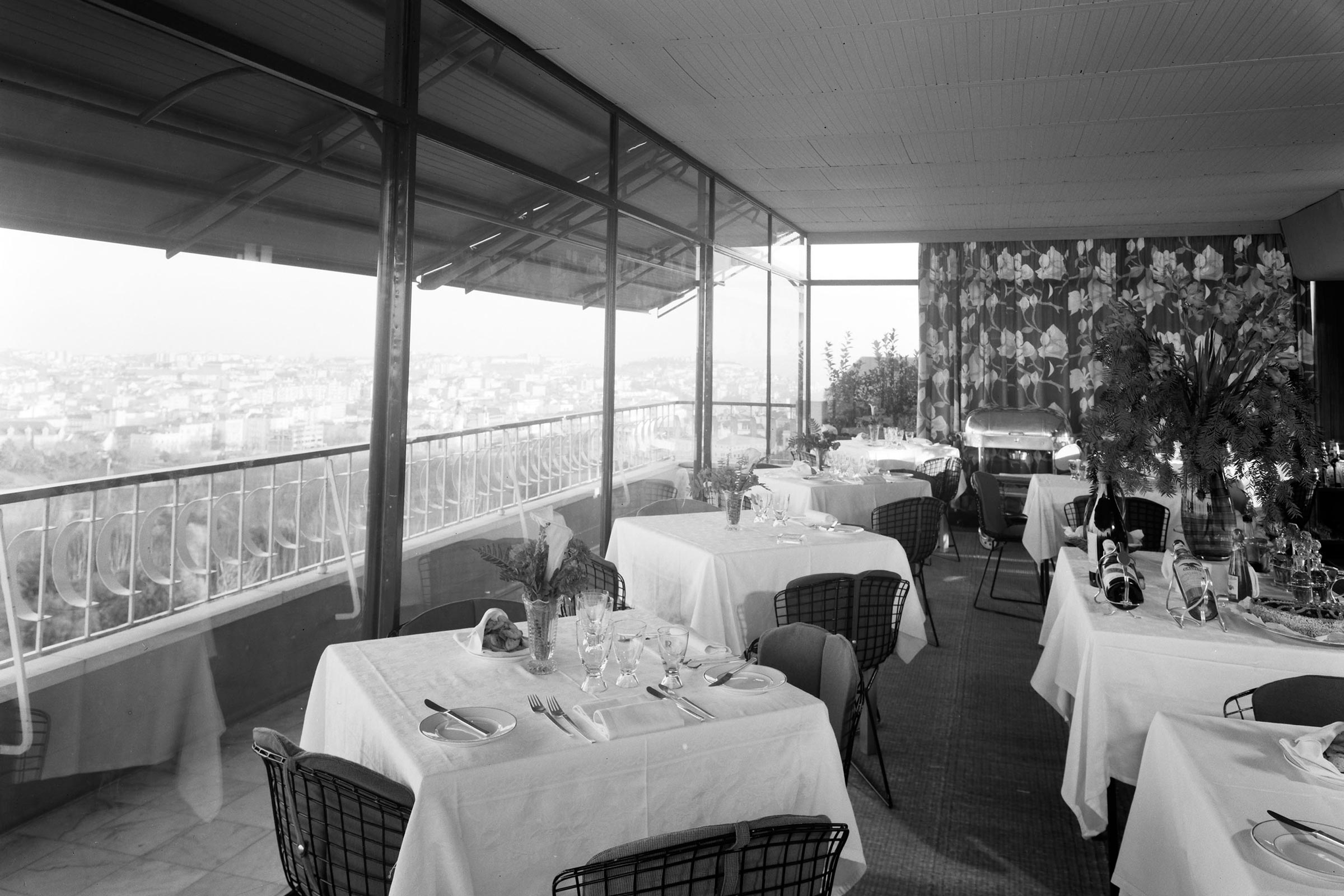
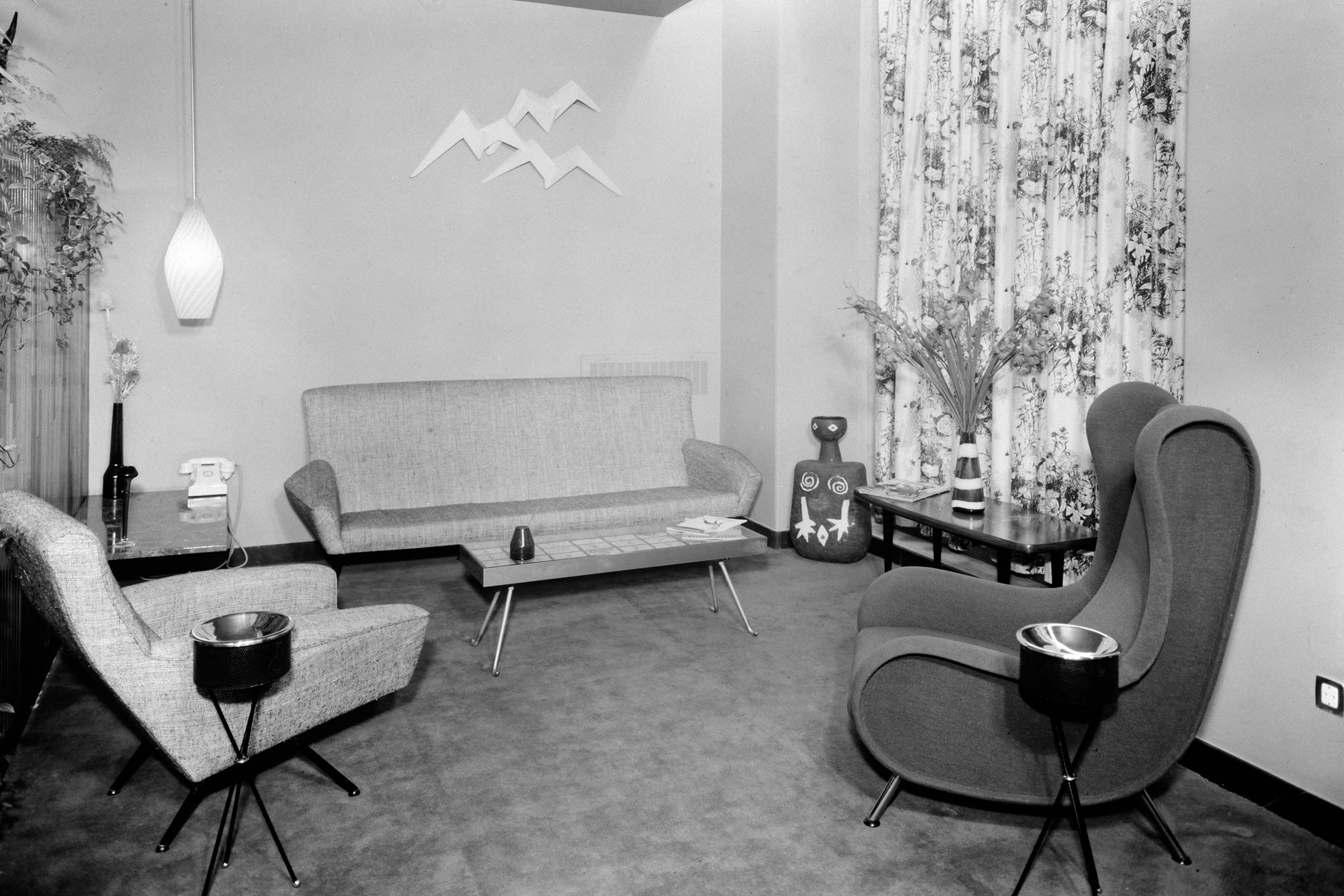
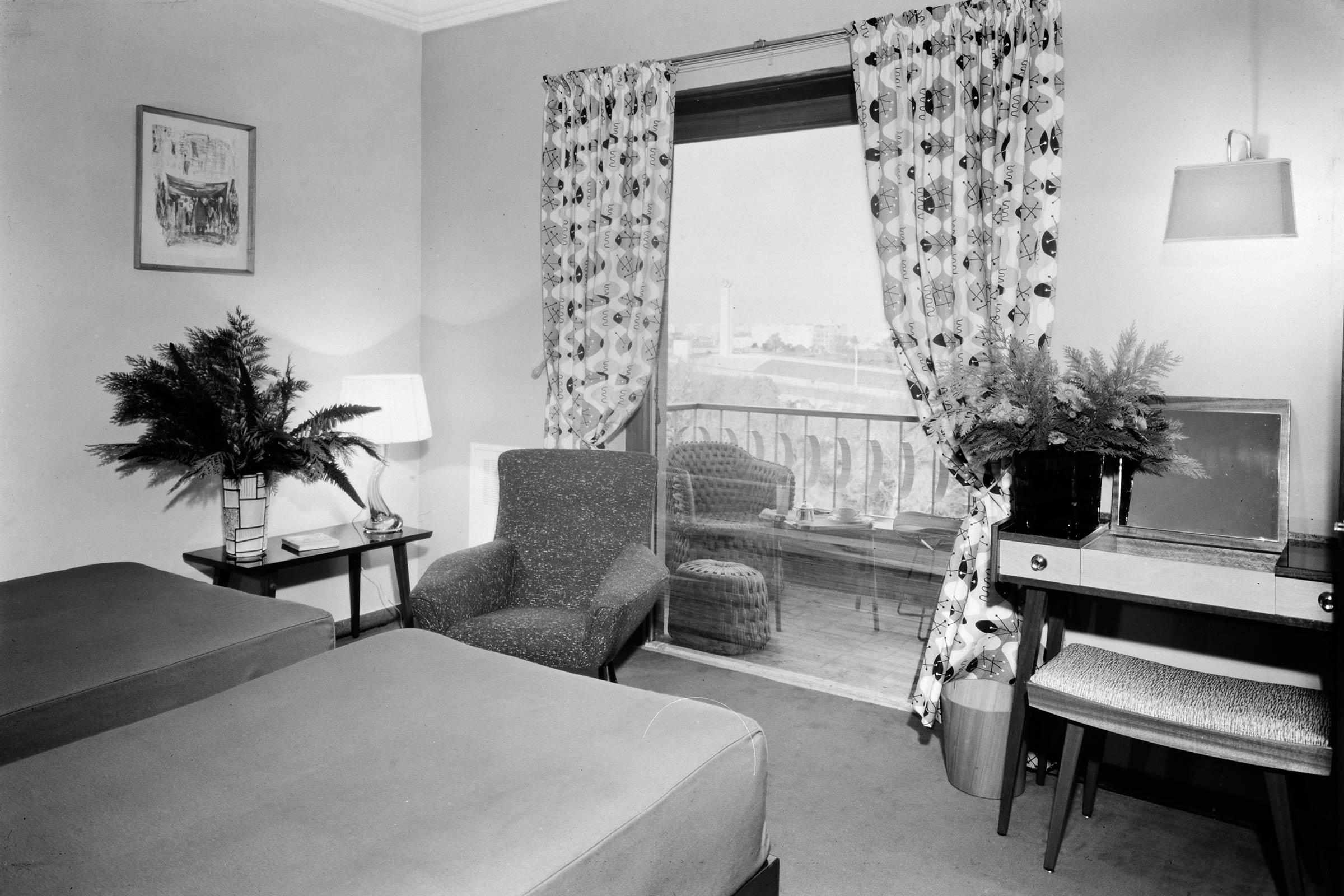
Hotel Ritz
(Lisbon, Portugal)
Opened in 1959, the Ritz fulfilled a long-held dream of providing the capital with a modern hotel capable of rivalling the best in the world.
The inauguration ceremony was attended by some illustrious international guests, such as King Humberto of Italy, the Counts of Barcelona, and the Princes of Savoy, as well as, of course, members of the government, although Salazar’s absence did not go unnoticed.
The author of the project, which took seven years to complete, was the architect Pardal Monteiro, who died in 1957 and therefore never saw “his” hotel finished.
Various artists collaborated on the interior decoration, including Almada Negreiros, Lino António, Carlos Botelho, Martins Correia and Lagoa Henriques.
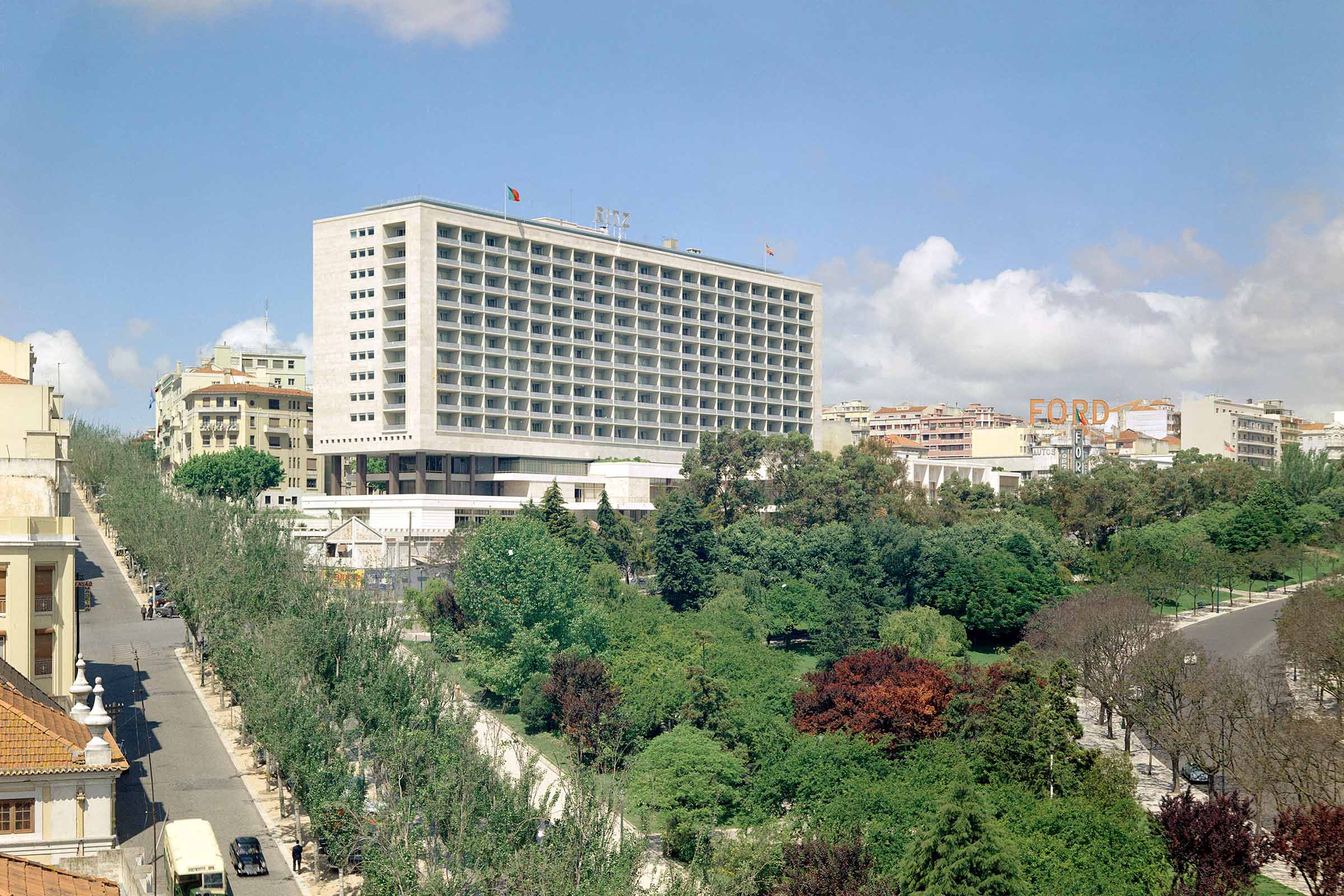
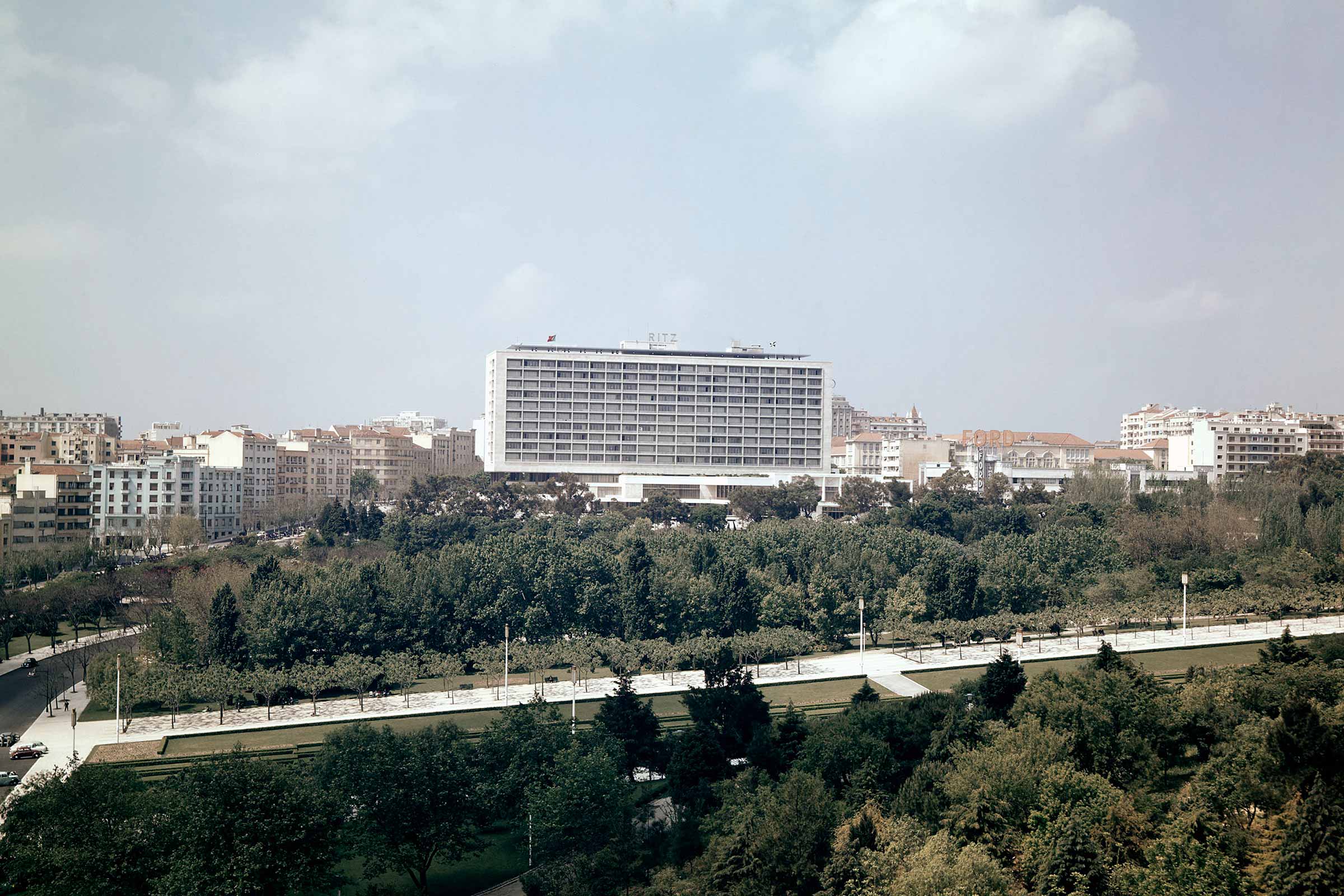
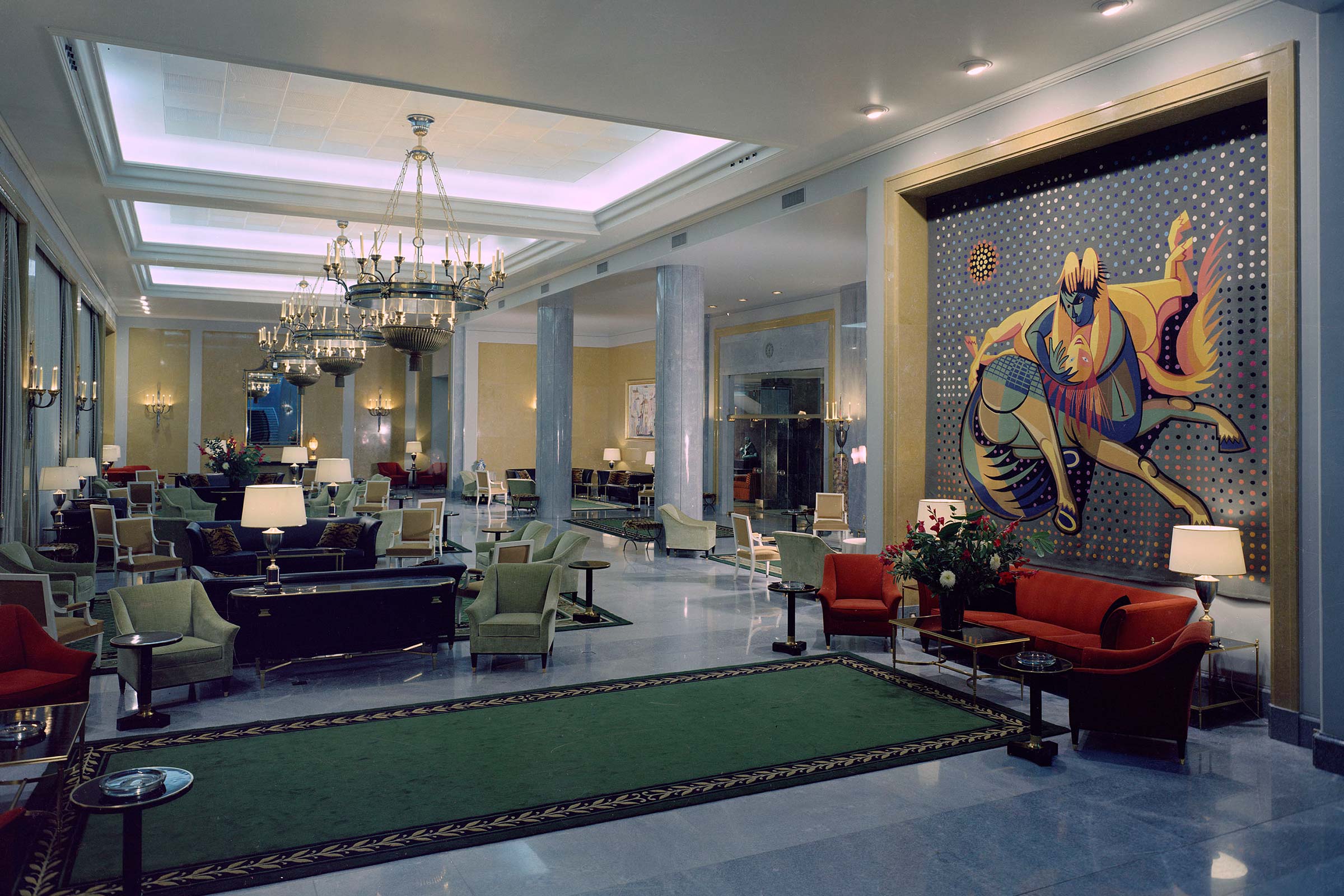
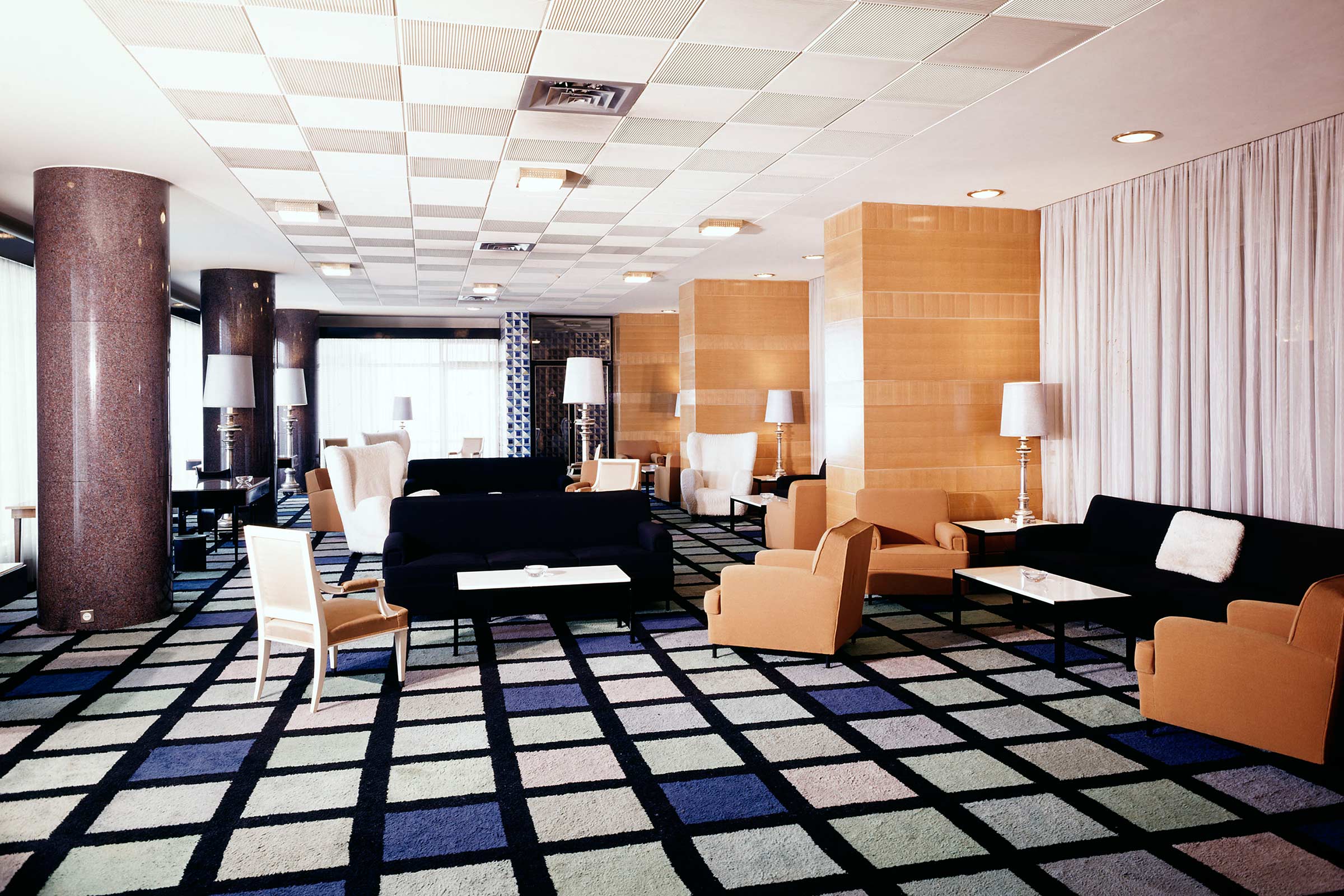
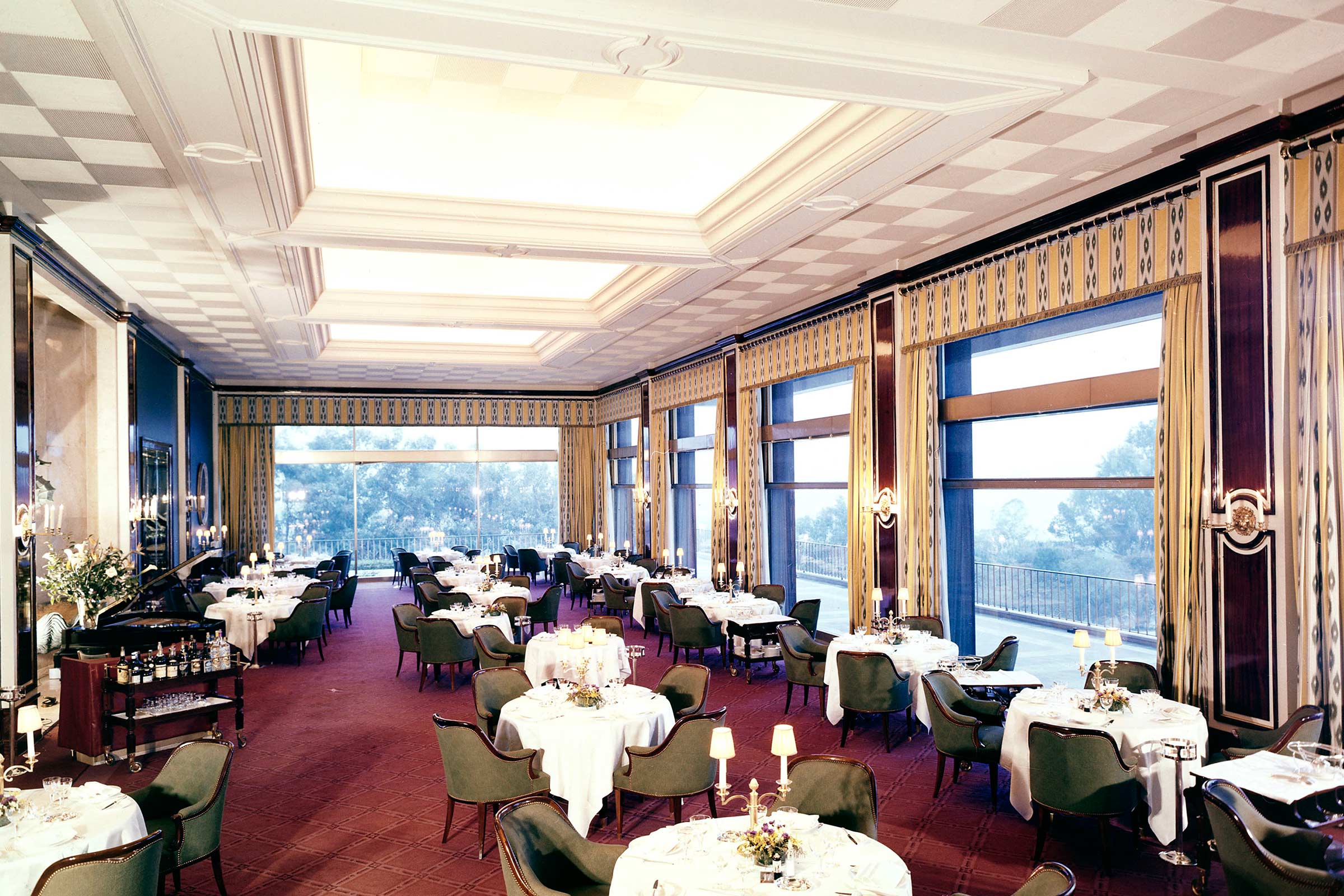
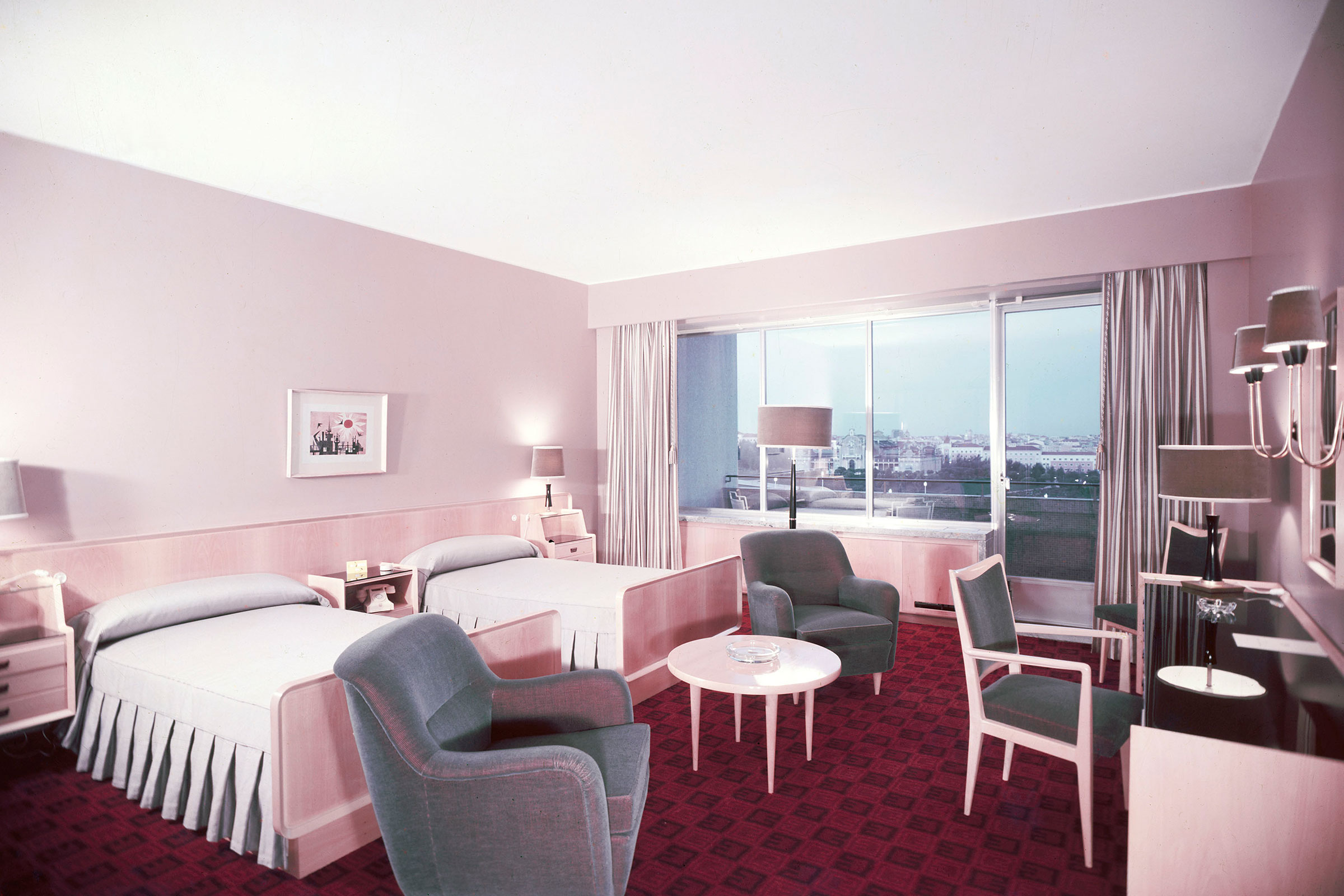
Palace Hotel da Curia
(Anadia, Portugal)
While the initial project (1913-1915) was designed by the architects Deolindo Vieira and Rafael Duarte de Melo, the architectural appearance of the Palace Hotel da Curia is due to the remodelling by the architect Norte Júnior (1922-1926).
A luxury hotel, it had a barber, a manicurist, a chapel, a garage, a 600-seat ballroom, and an Olympic-sized swimming pool, inaugurated in 1934 to a design by architect Raul Martins.
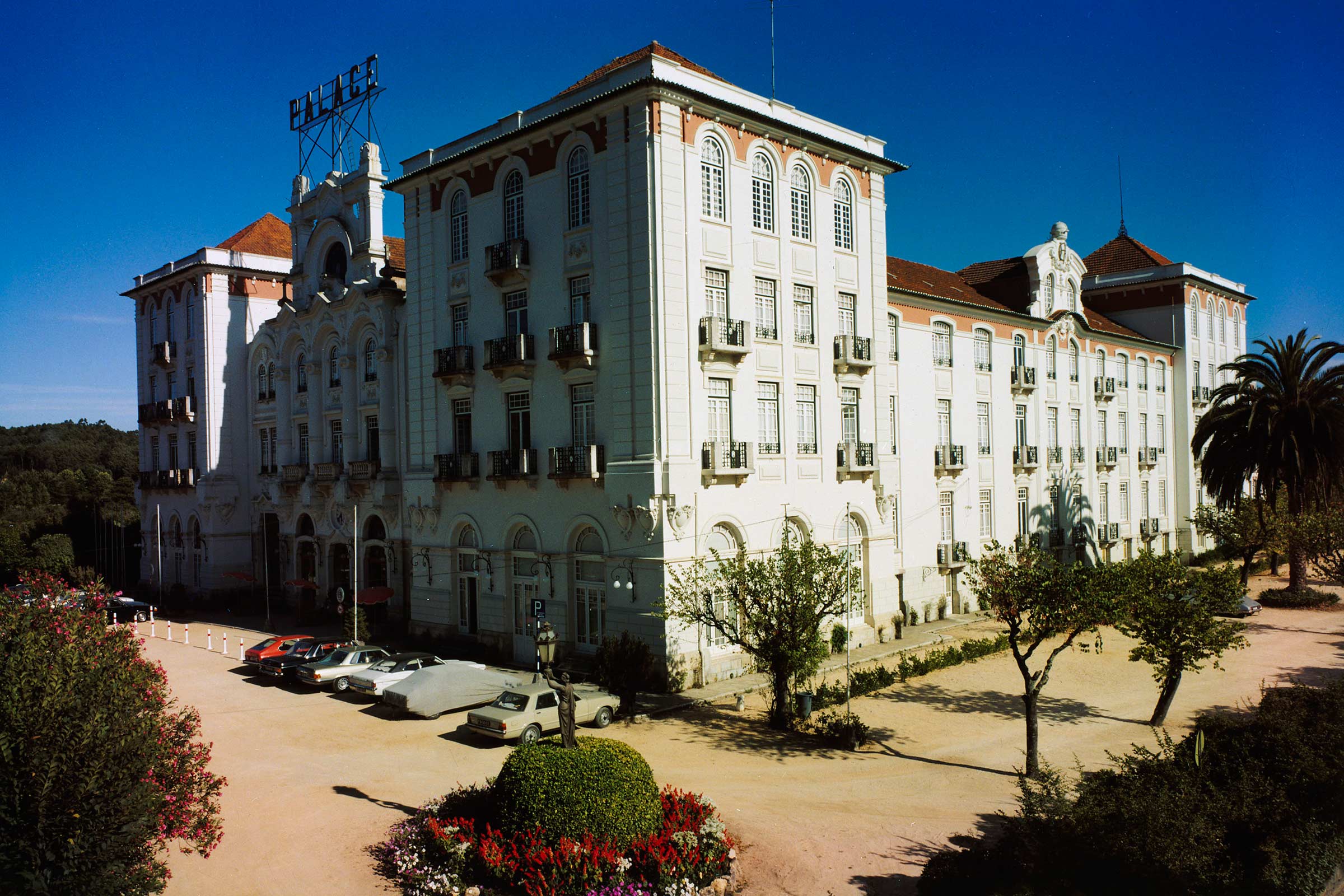
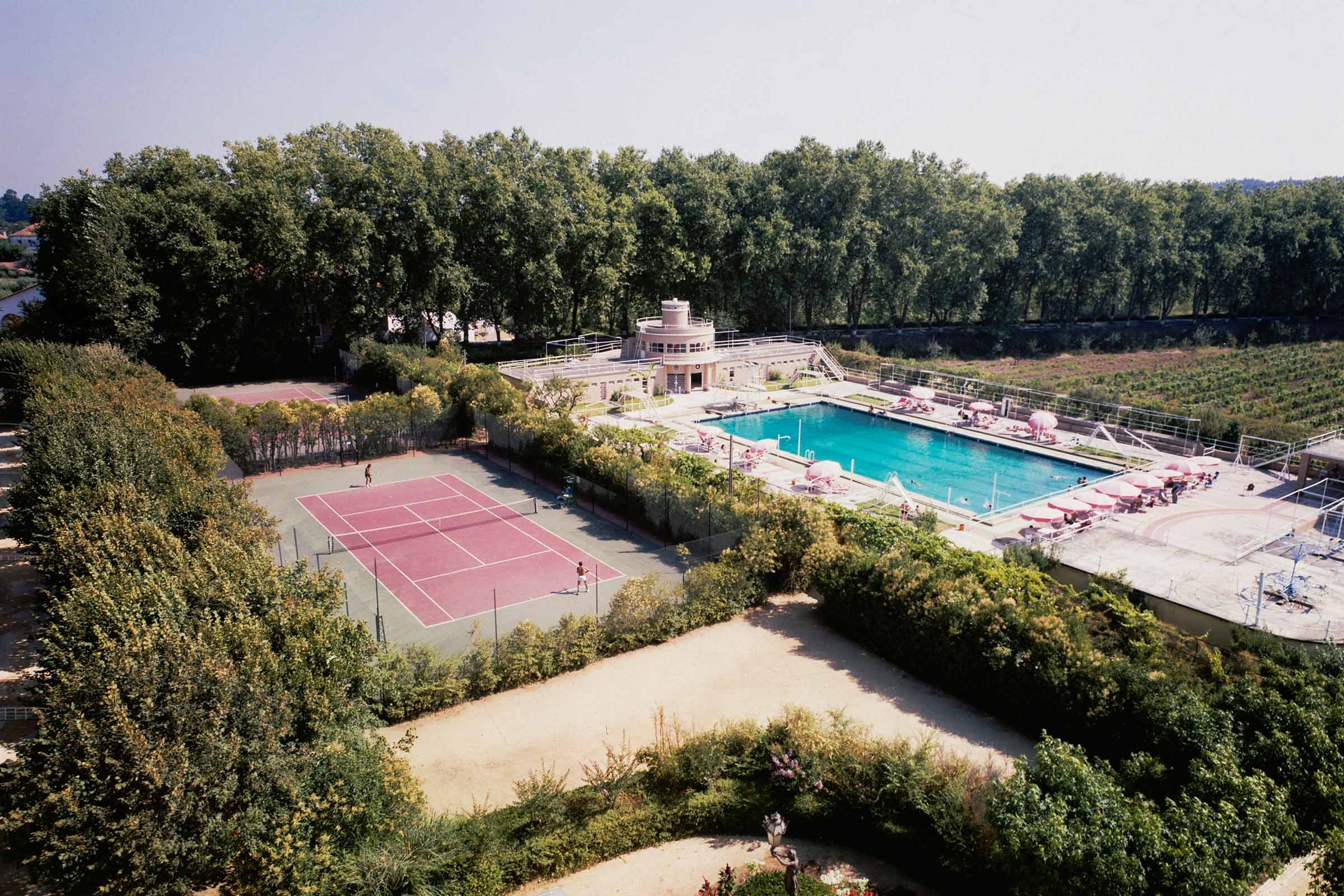
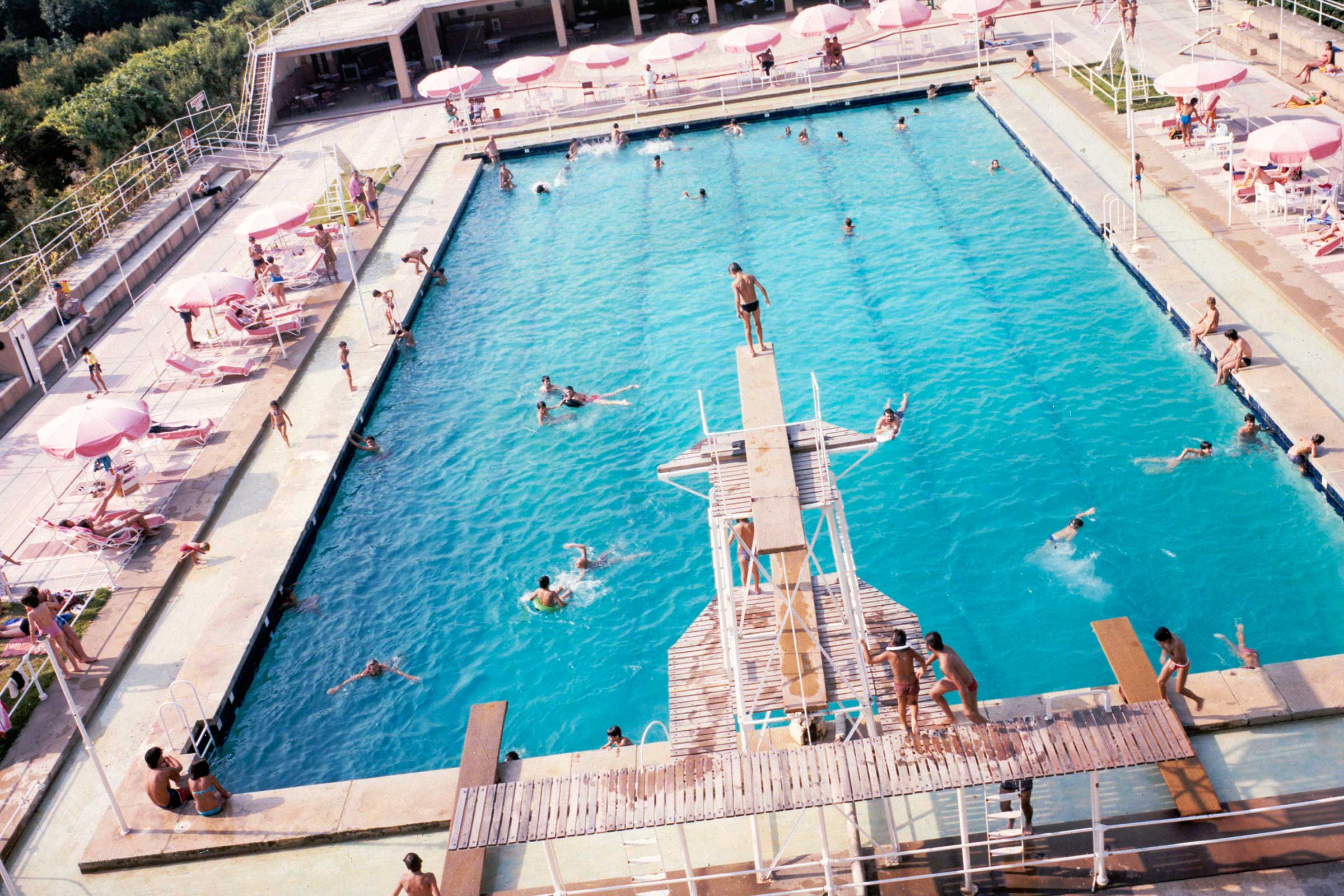
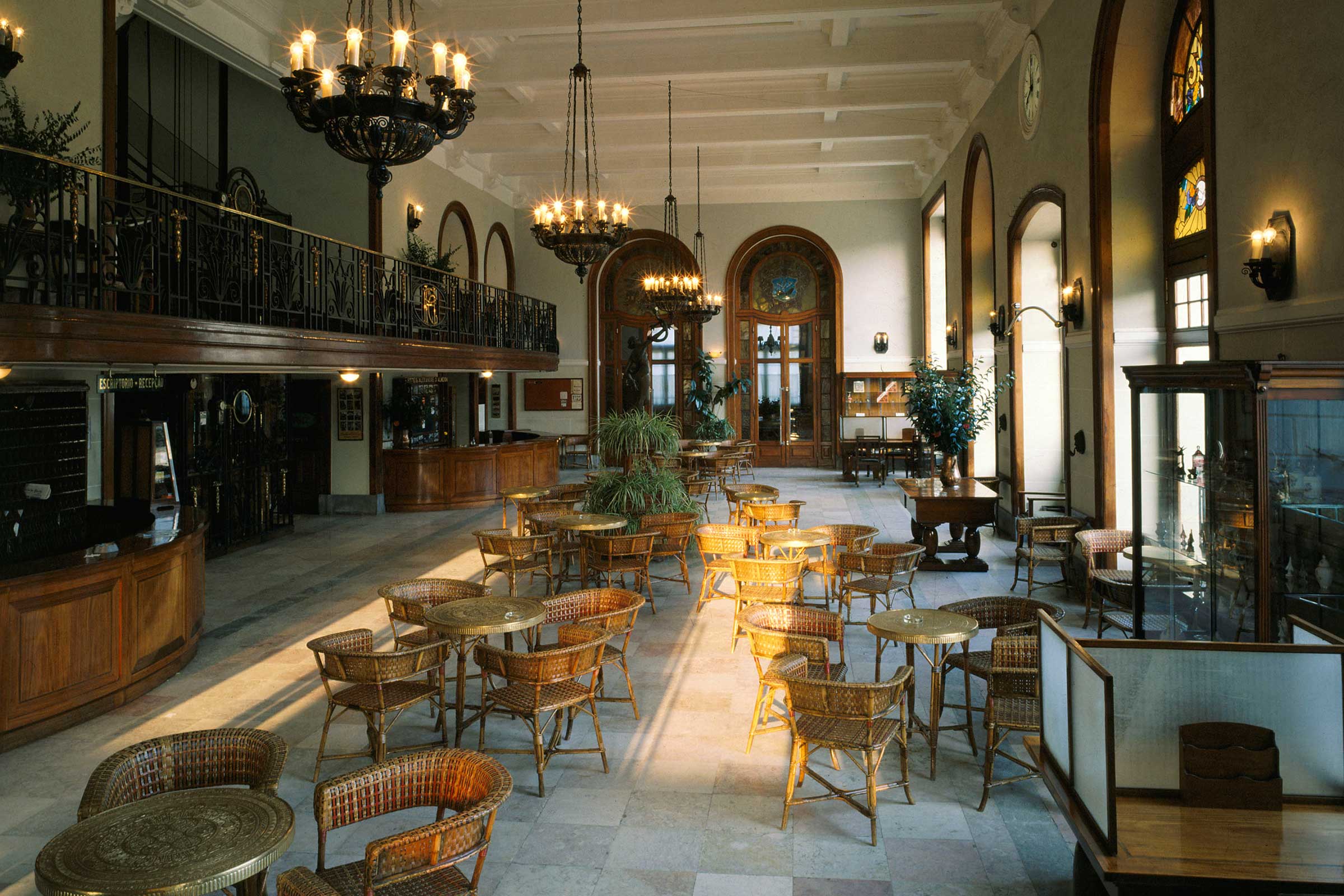
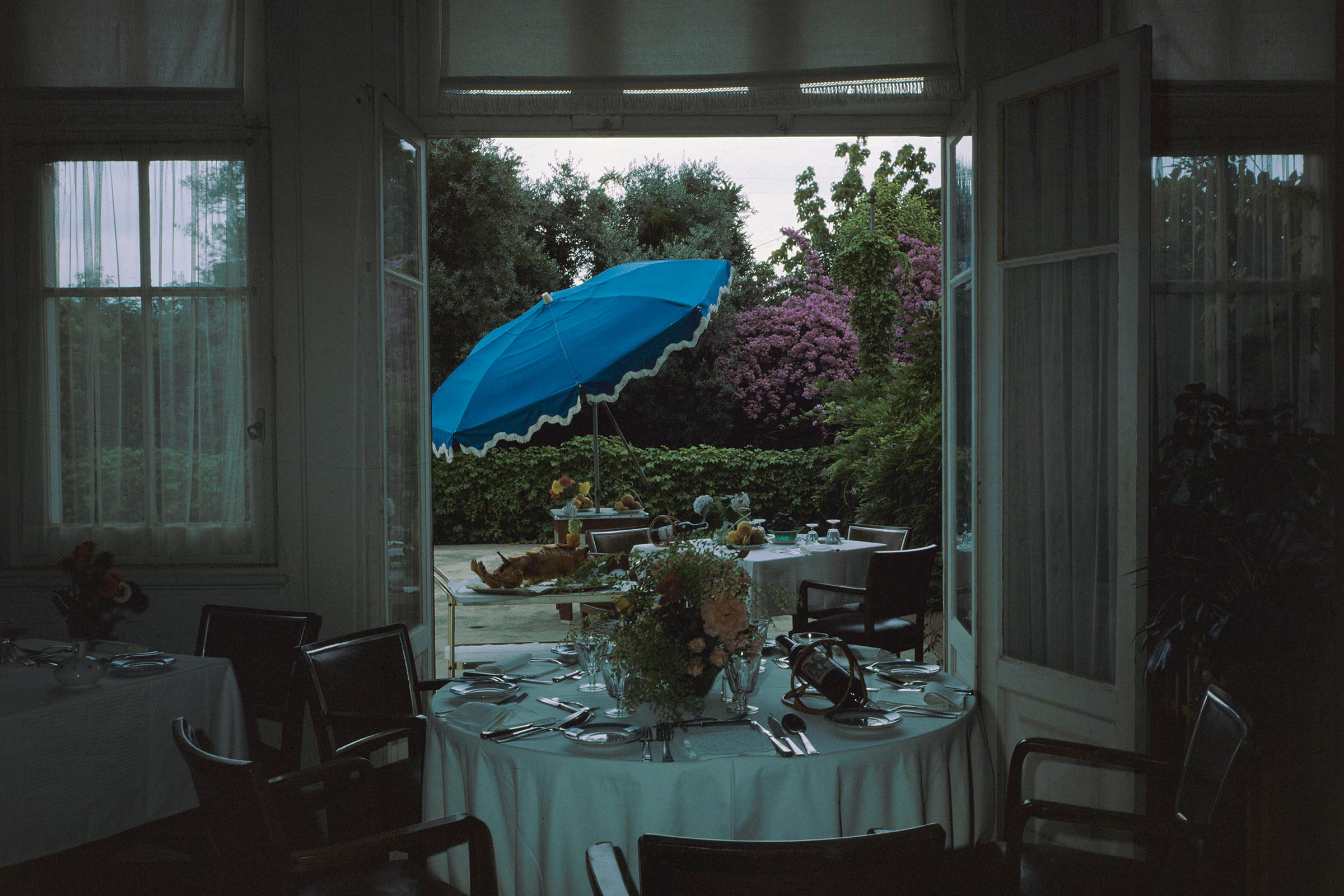
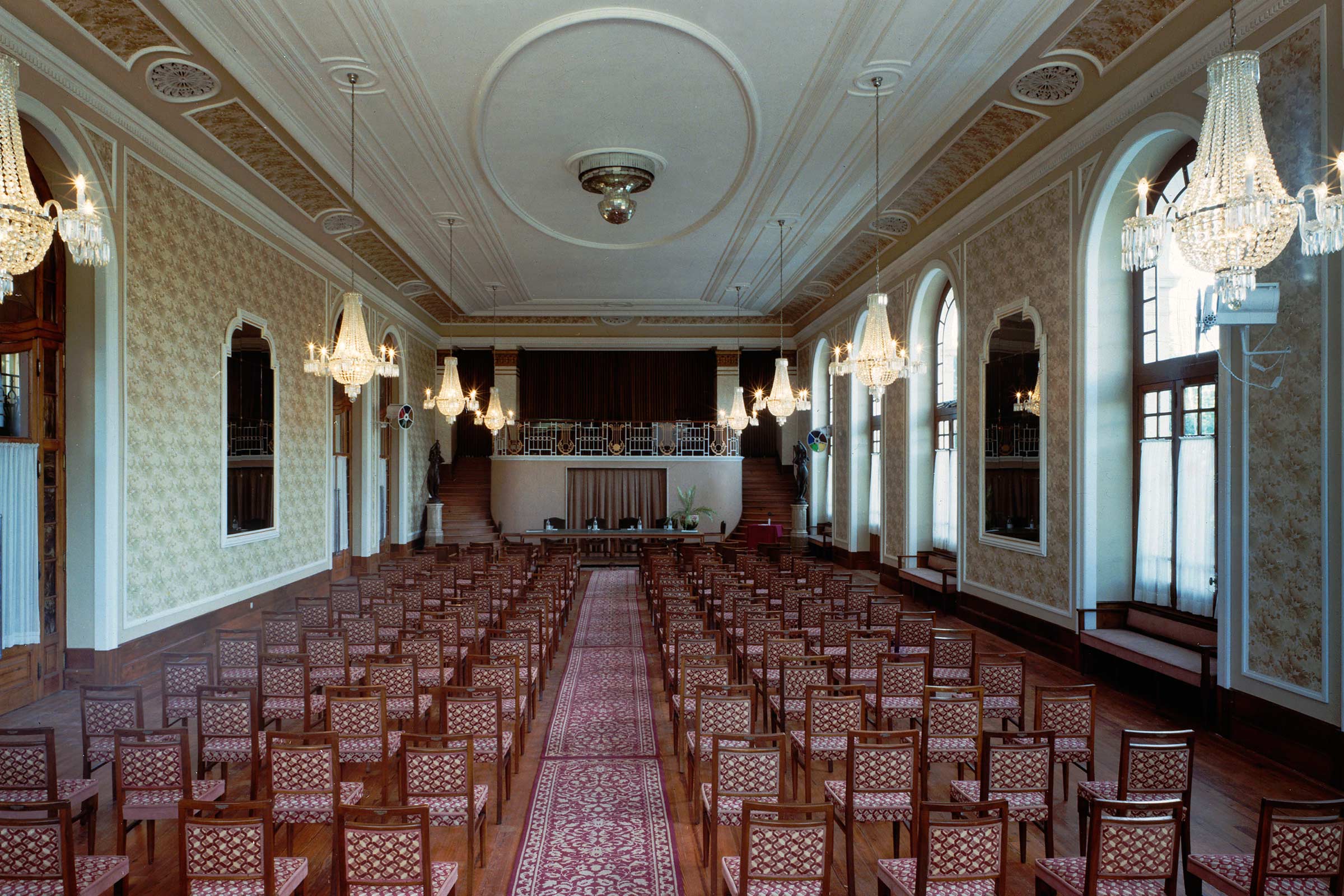
Palace Hotel do Bussaco
(Mealhada, Portugal)
The Palace Hotel is housed in a beautiful neo-Manuelino building dating from 1888, designed by the Italian architect and set designer Luigi Manini as a holiday residence for the royal family.
Subsequently, there were also interventions by architects Nicola Bigaglia and Norte Júnior.
The interiors were decorated by artists such as Jorge Colaço (tiles), António Ramalho, Carlos Reis, João Vaz (painting) and Costa Mota Sobrinho (sculpture).
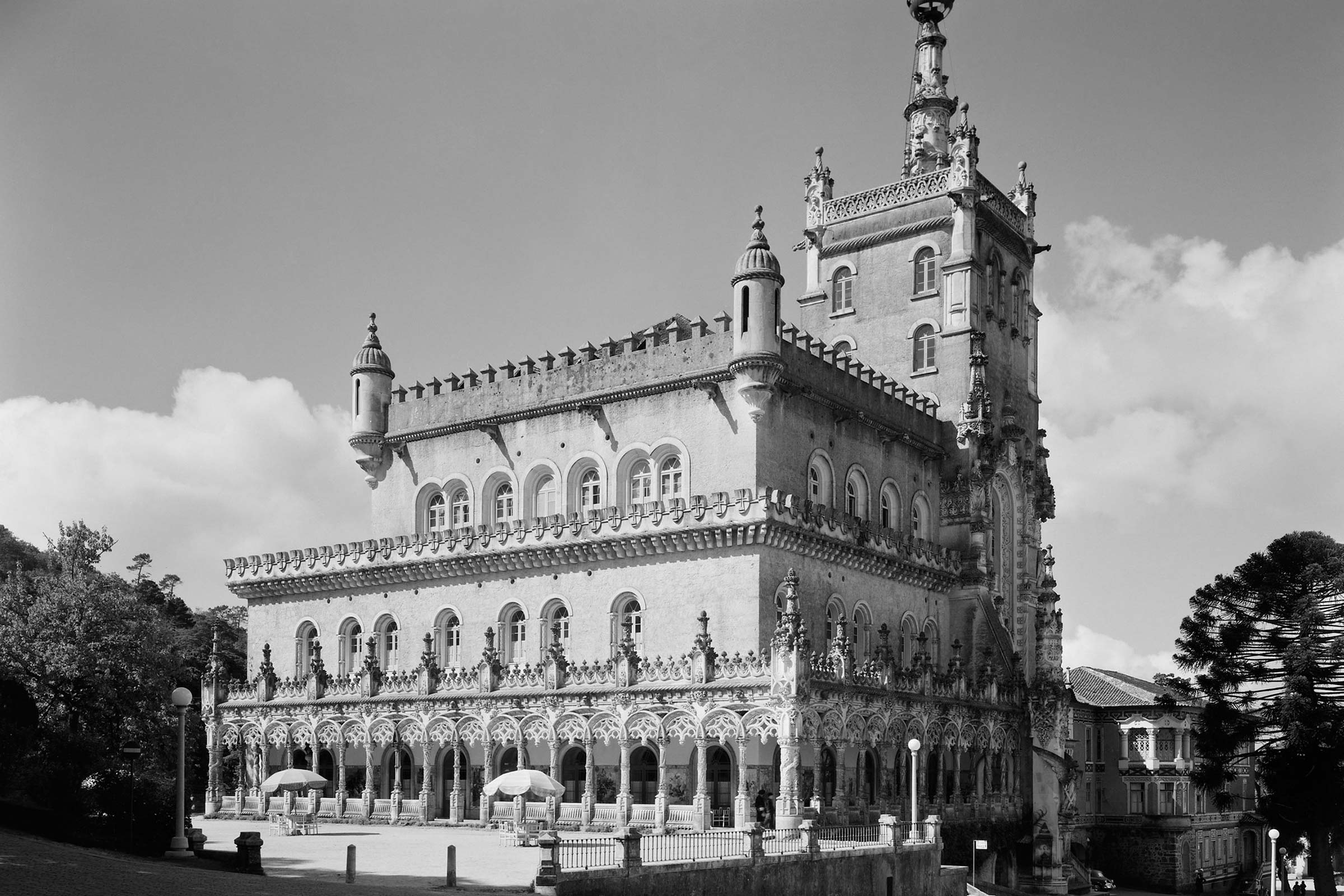
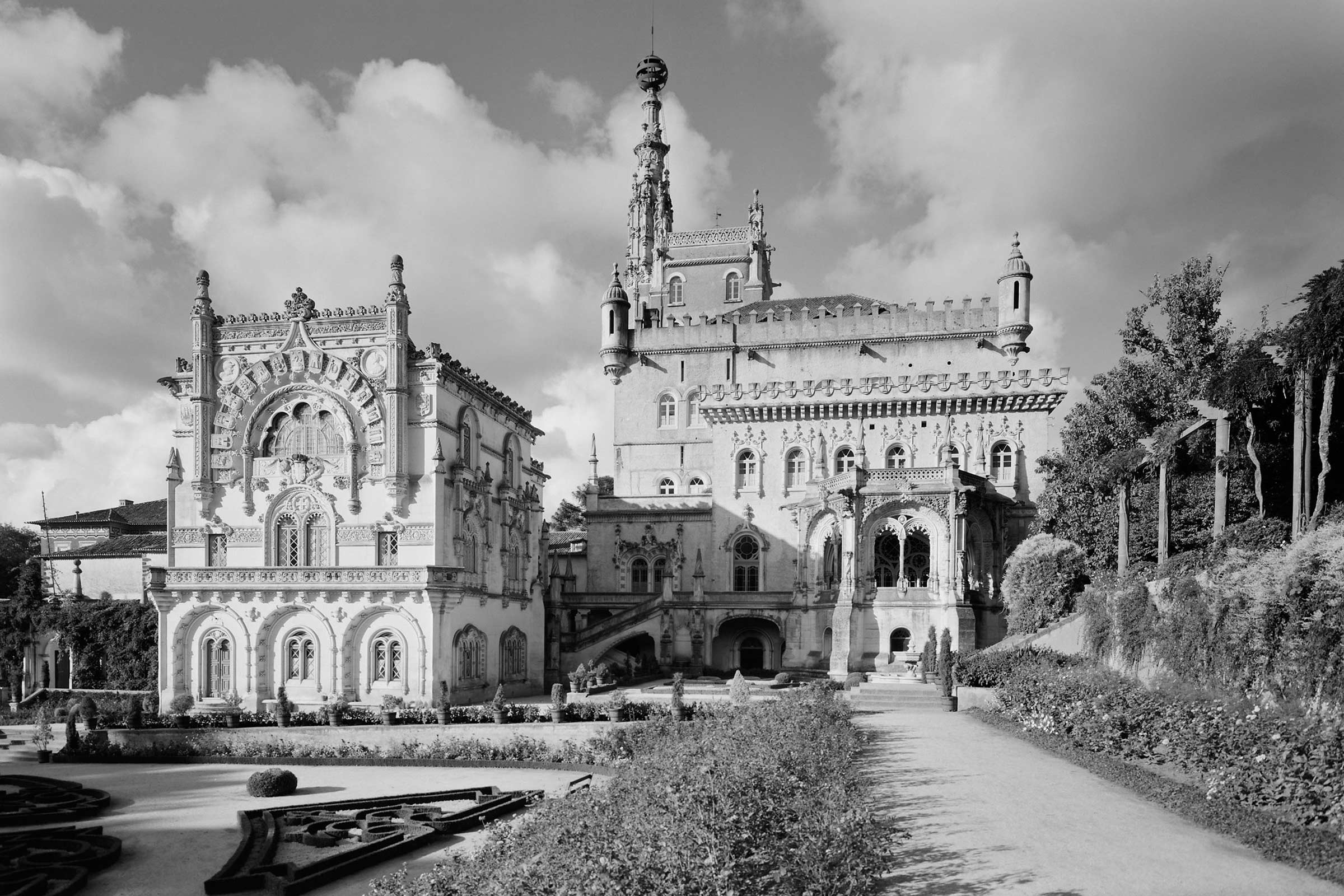
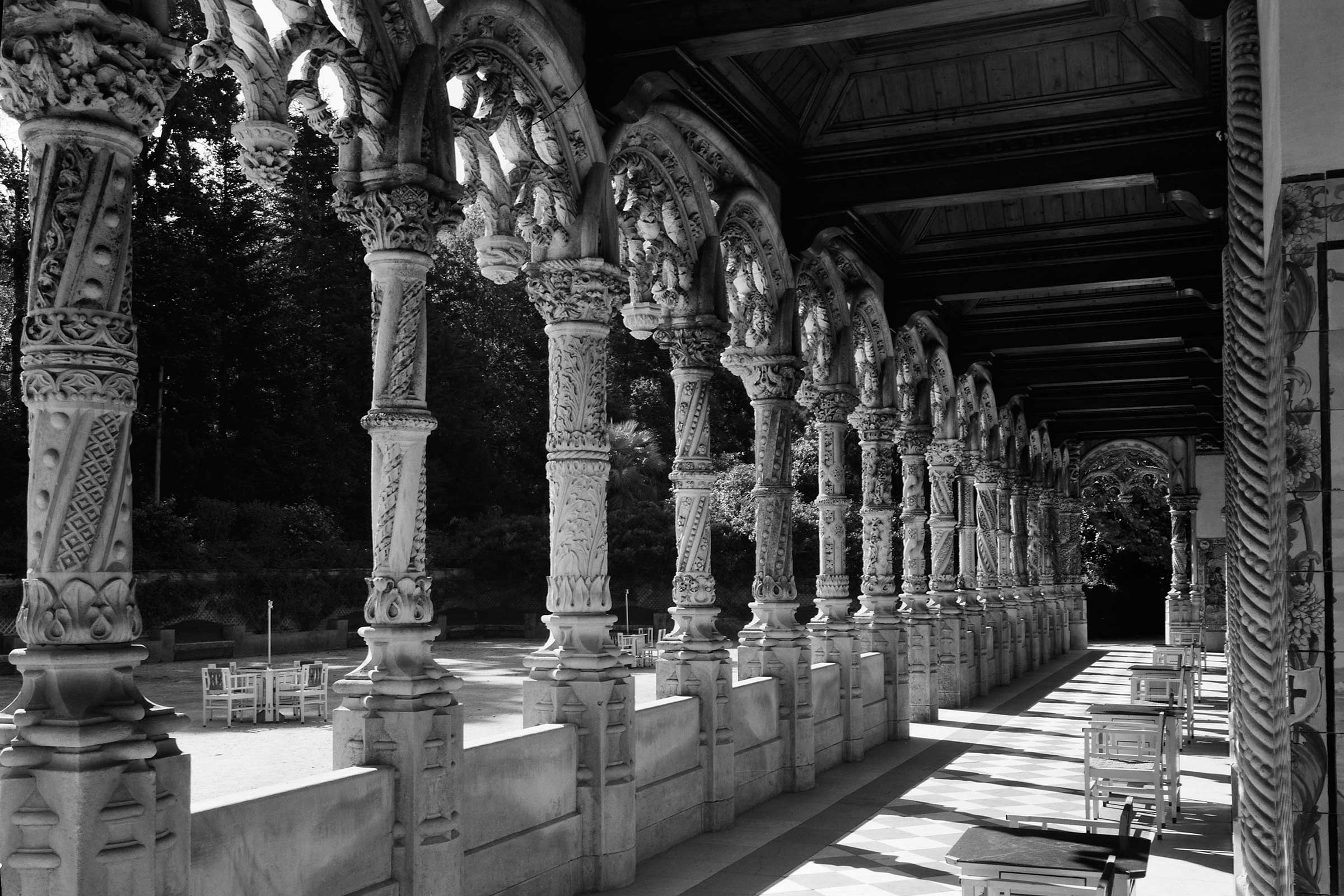
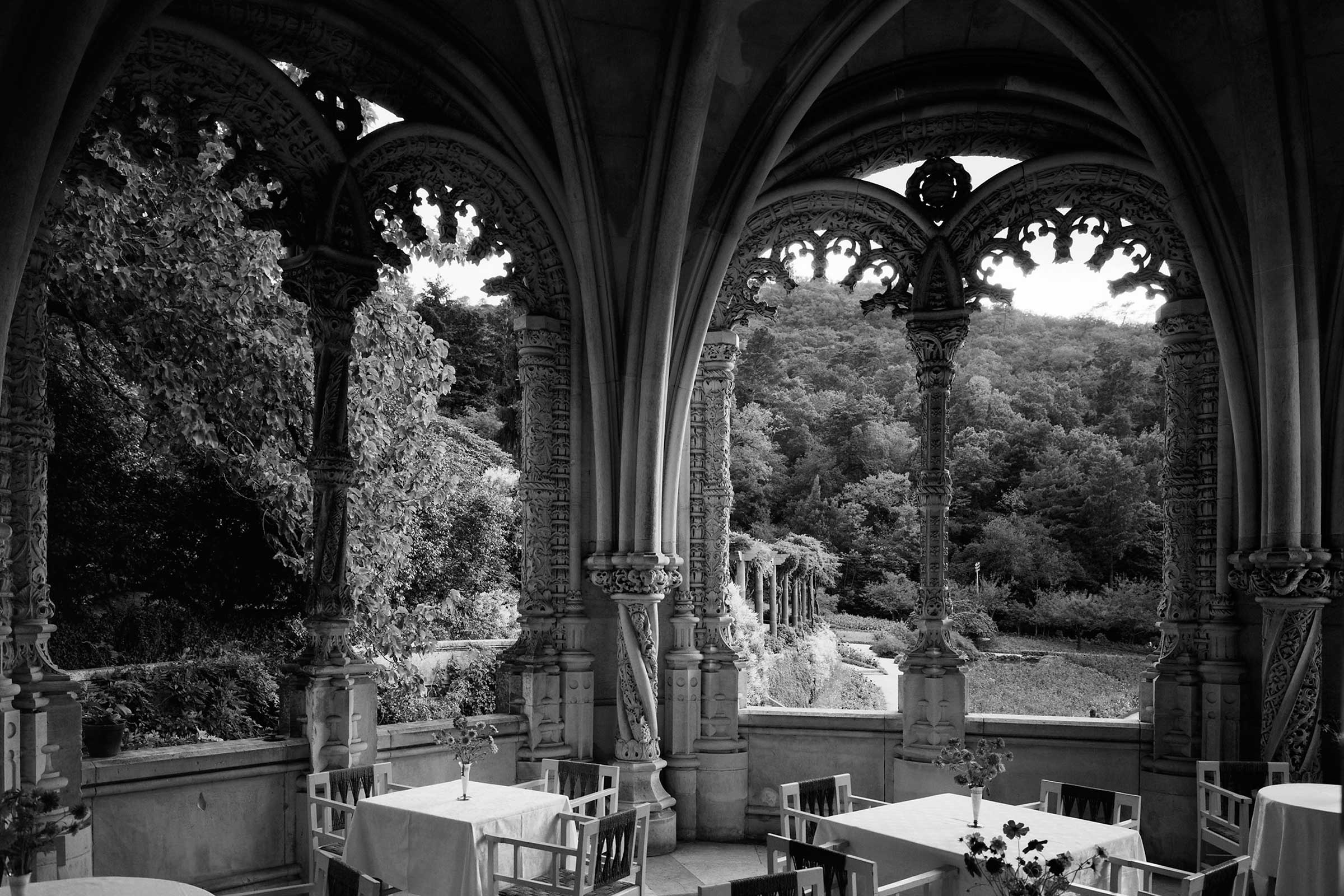


Photos with history
The photographs from the Mário and Horácio Novais' studios offer glimpses of the past, in Portugal and abroad, of daily life and great historical events, landscapes, architecture, public figures and much more.
